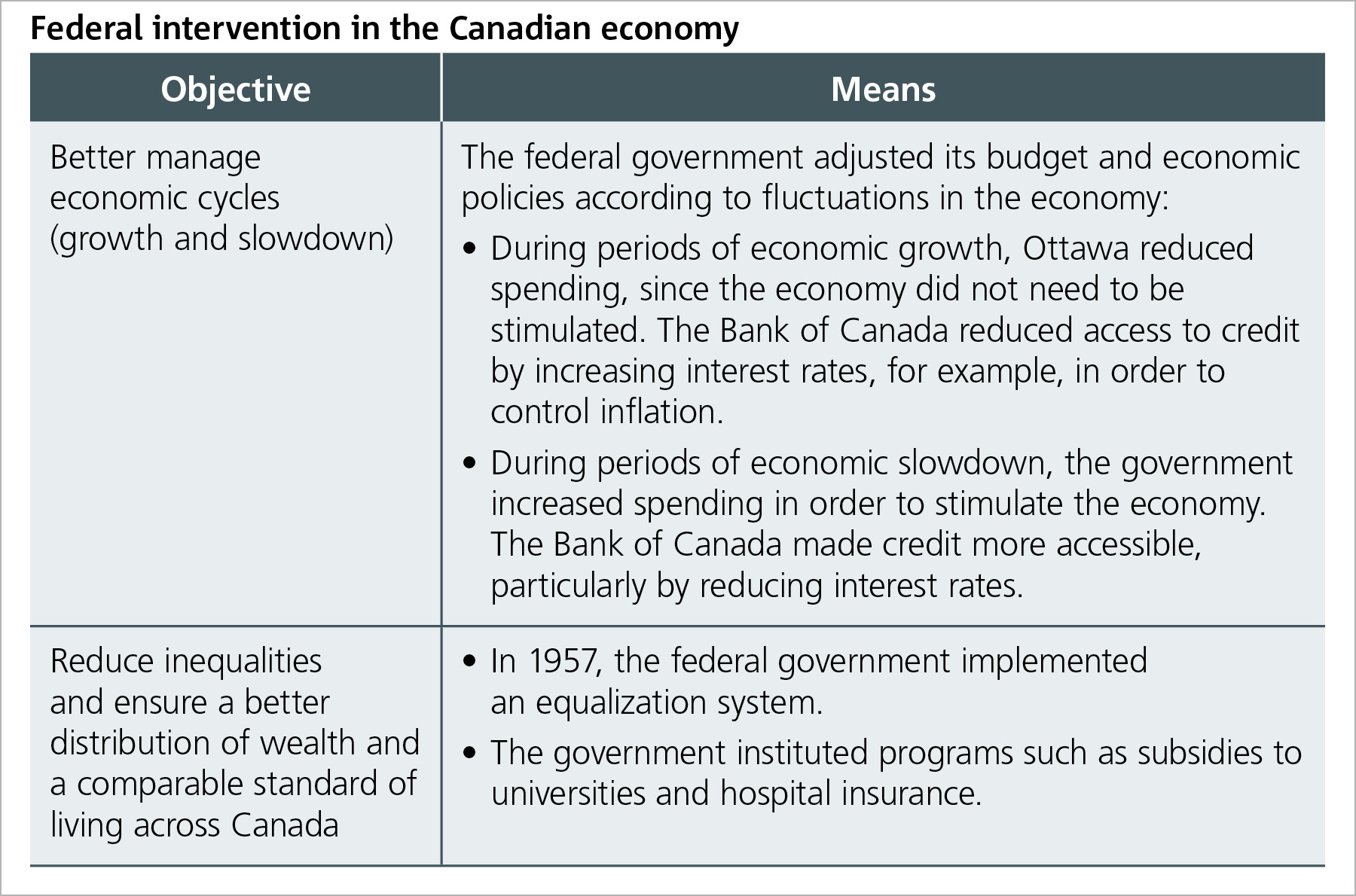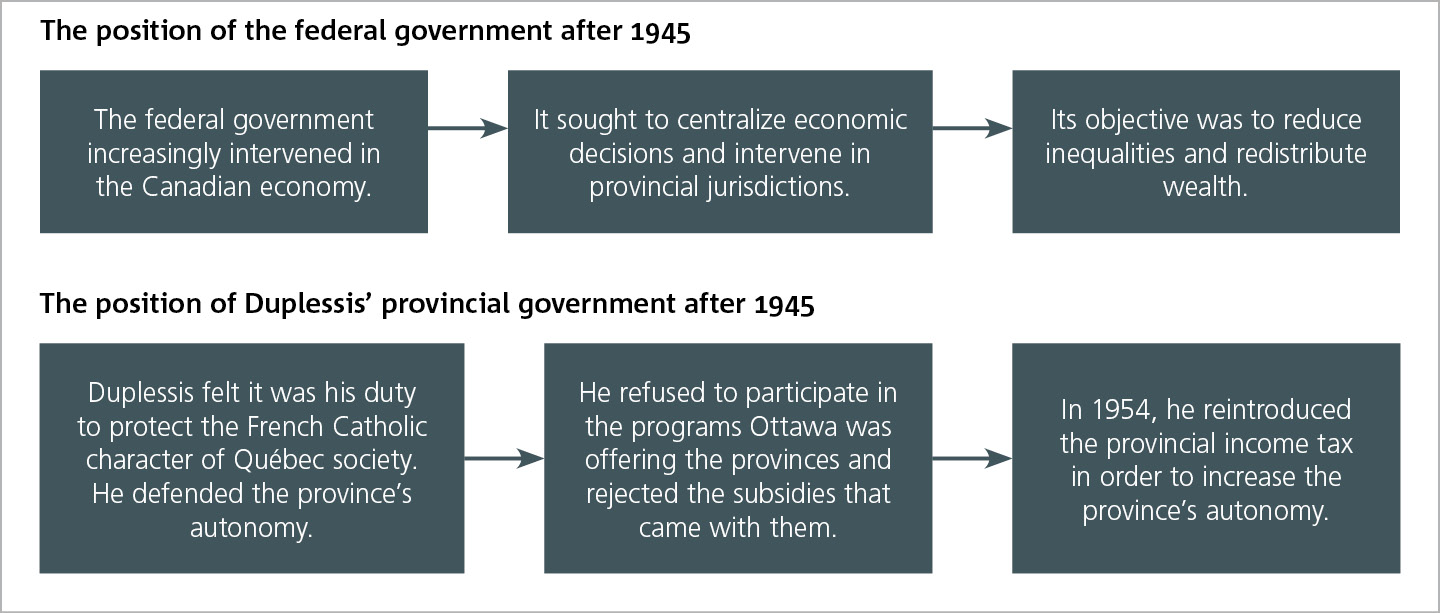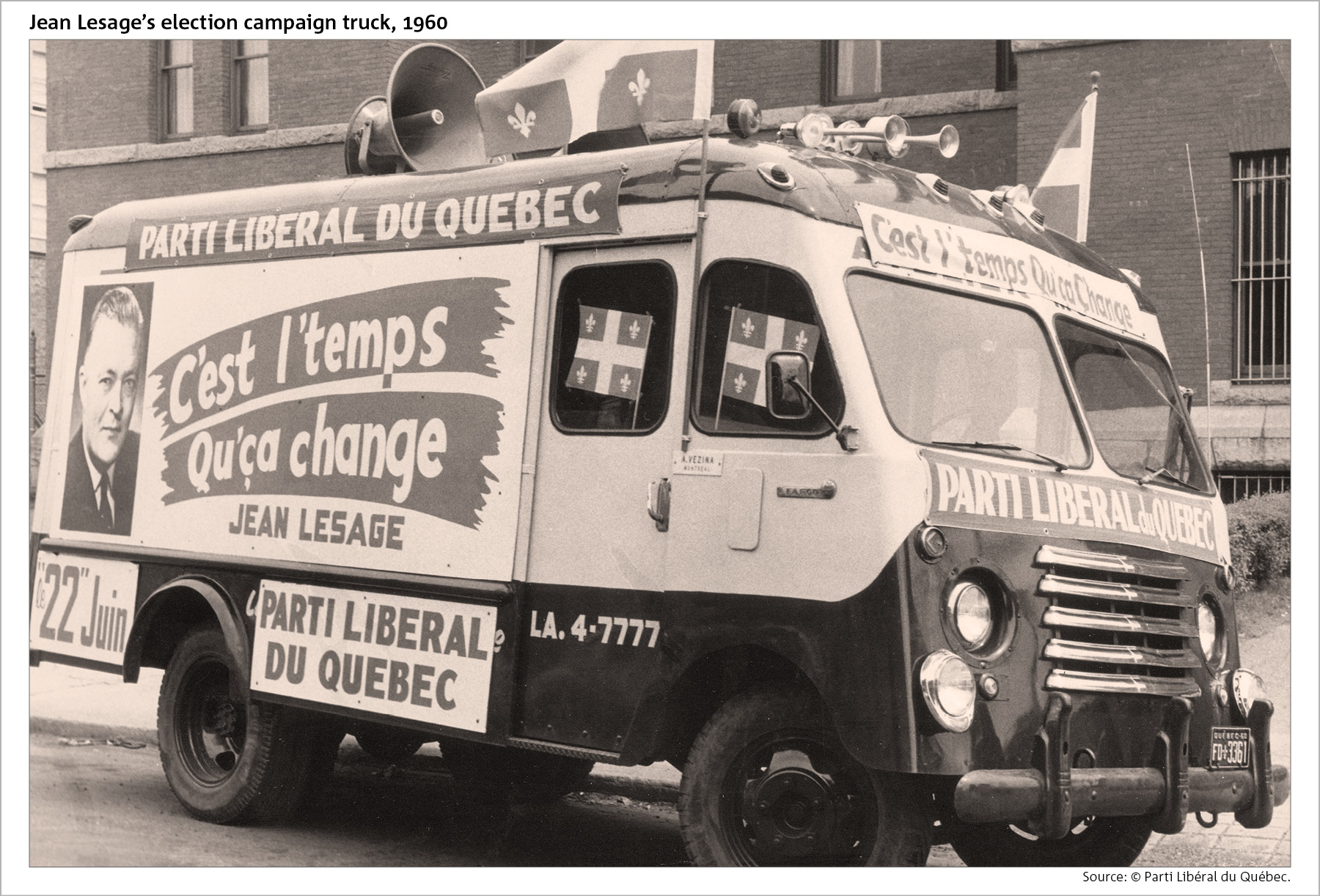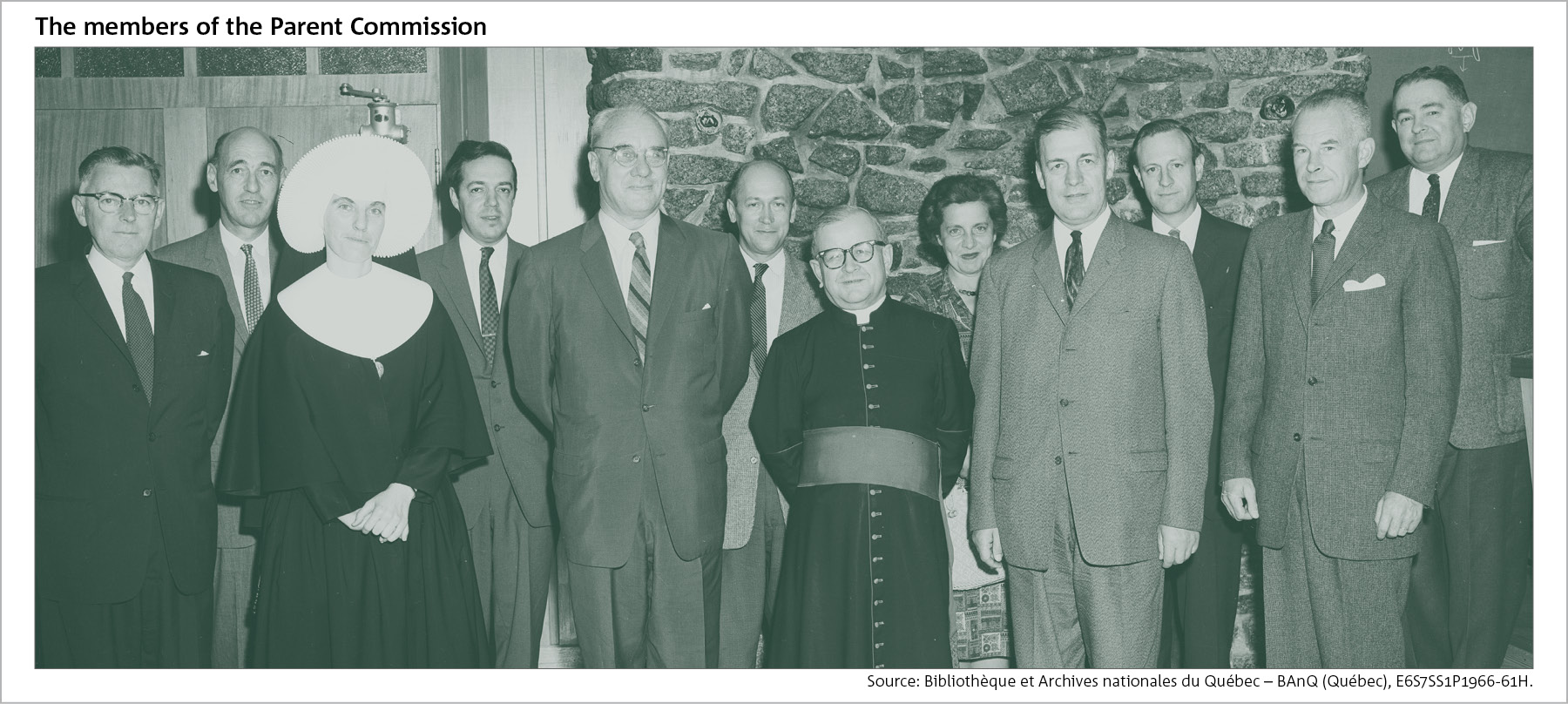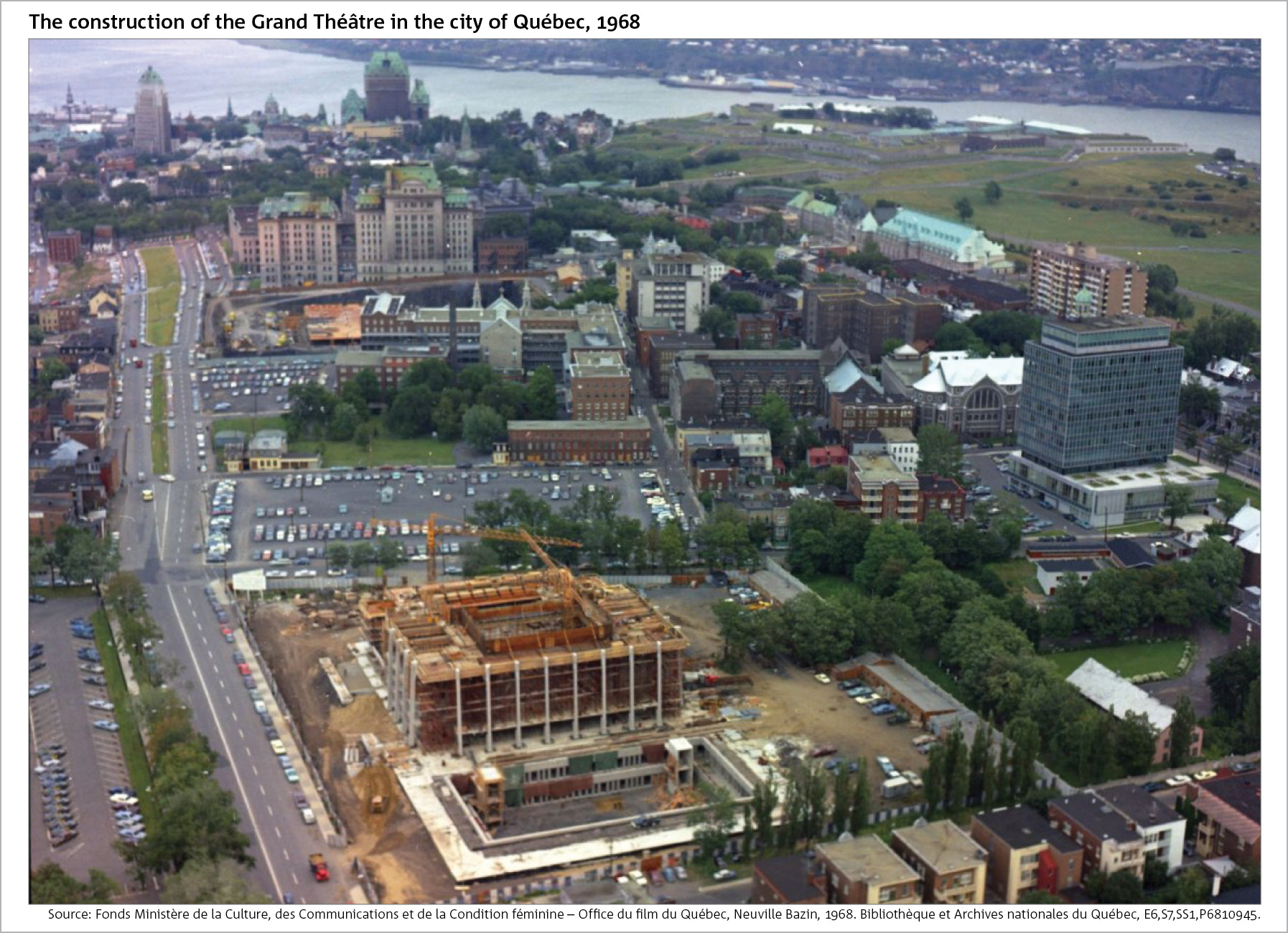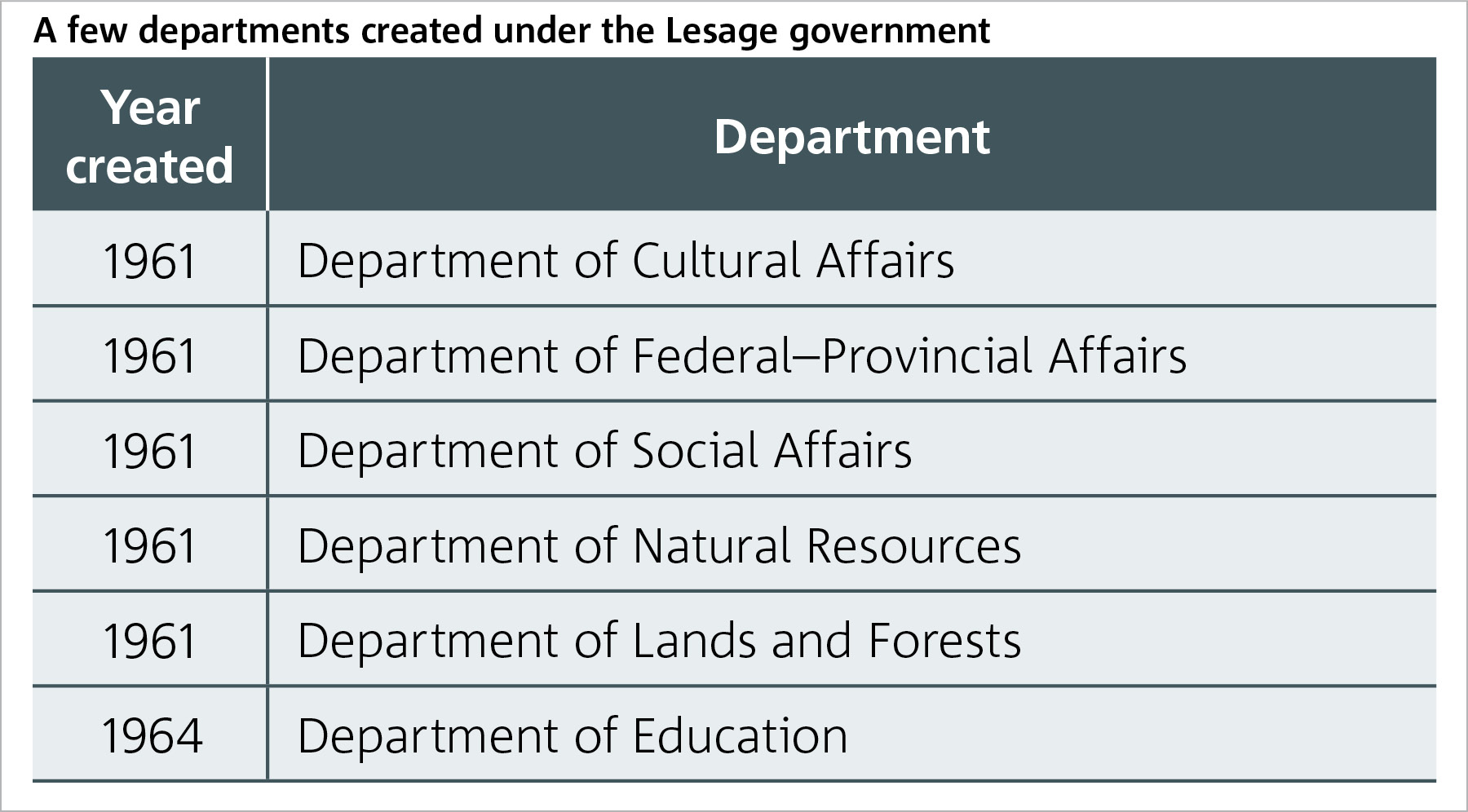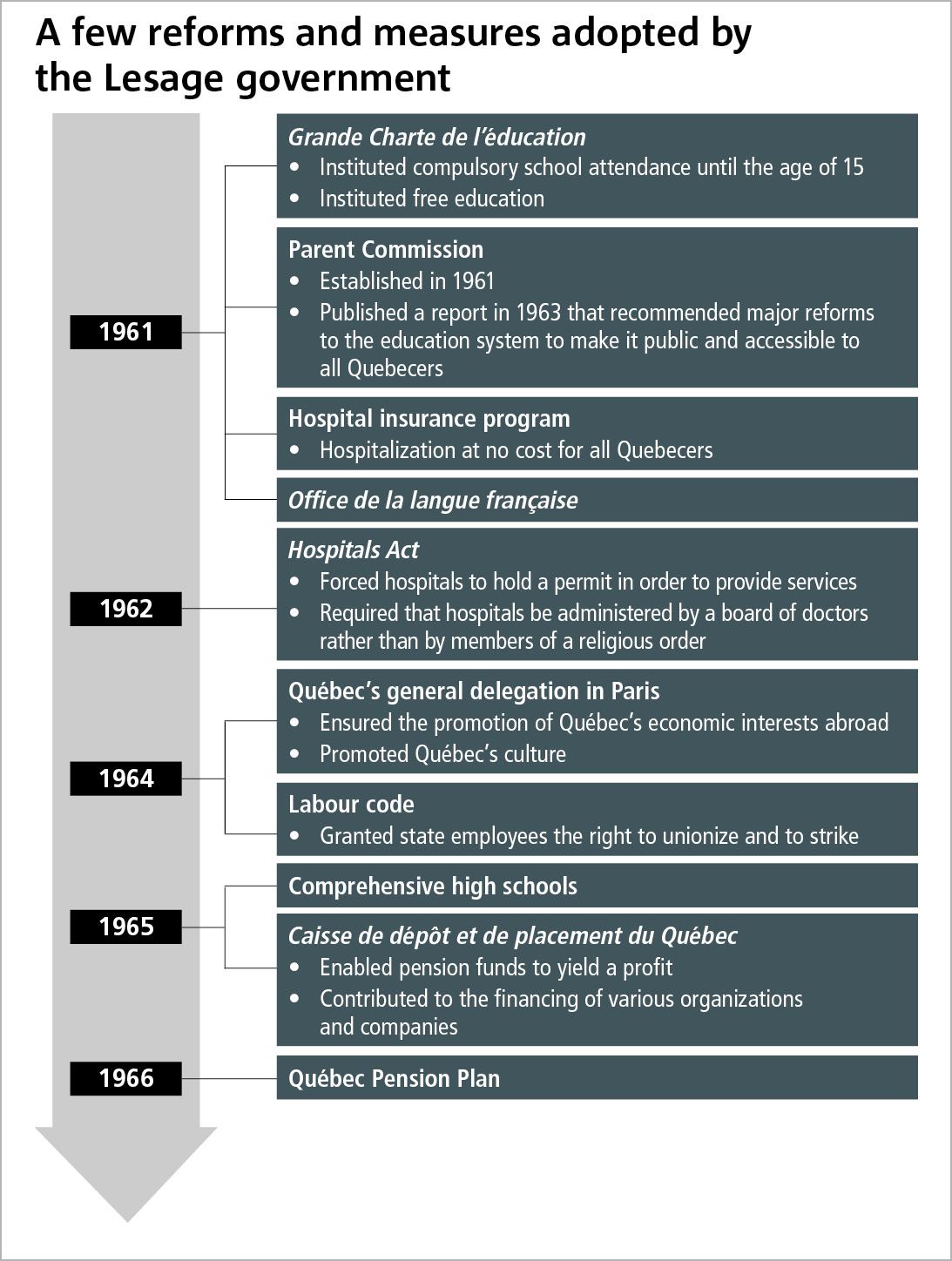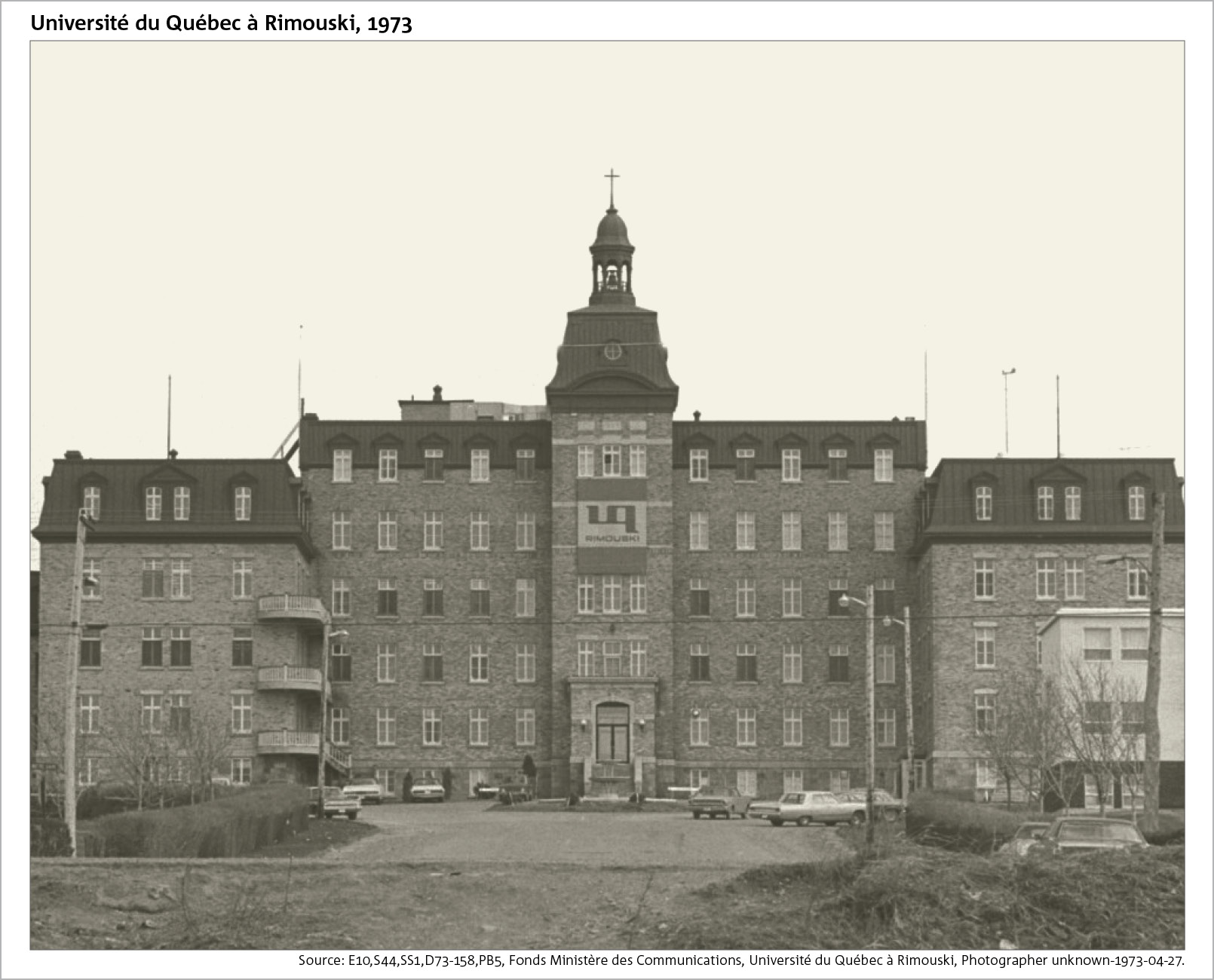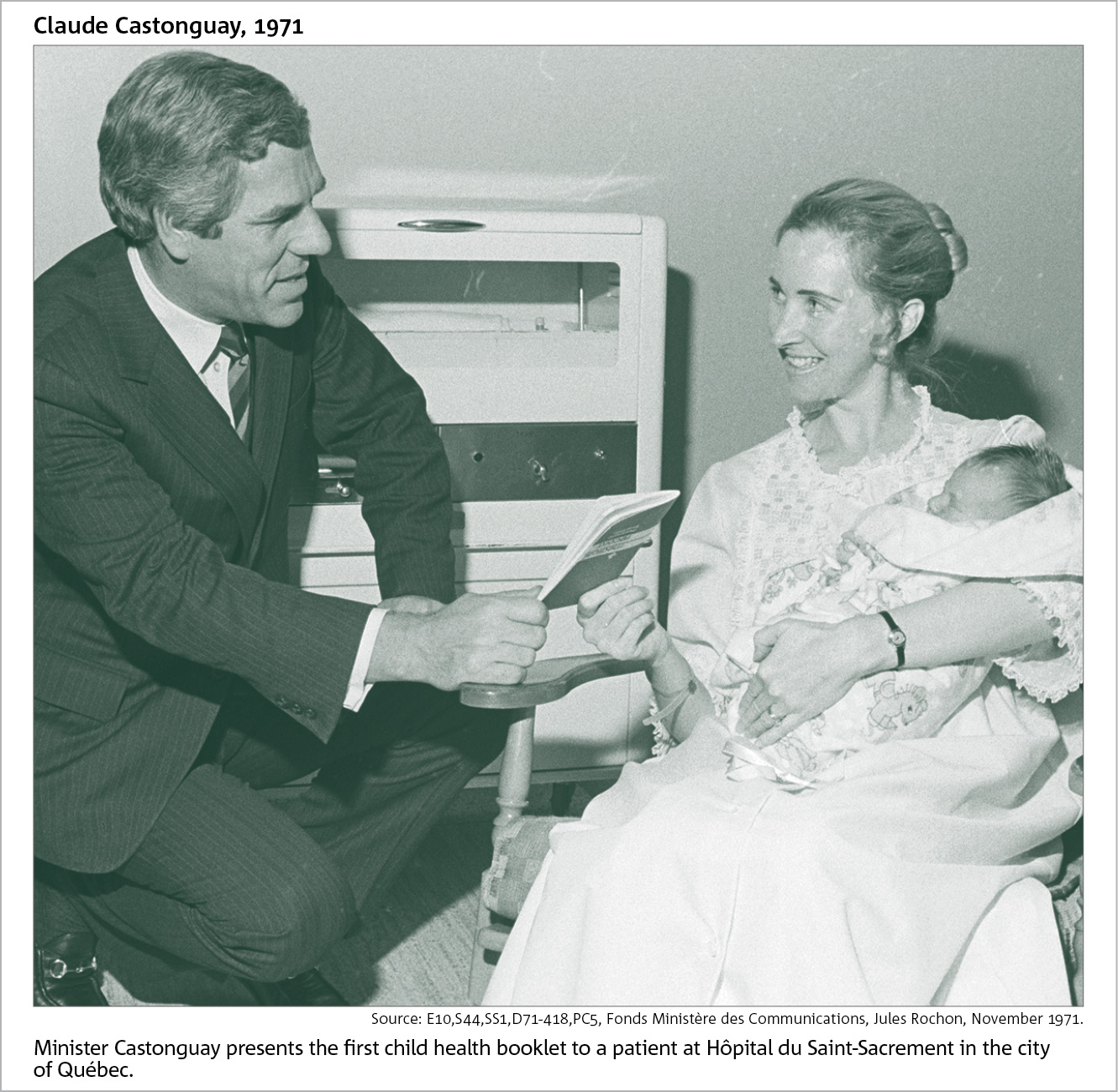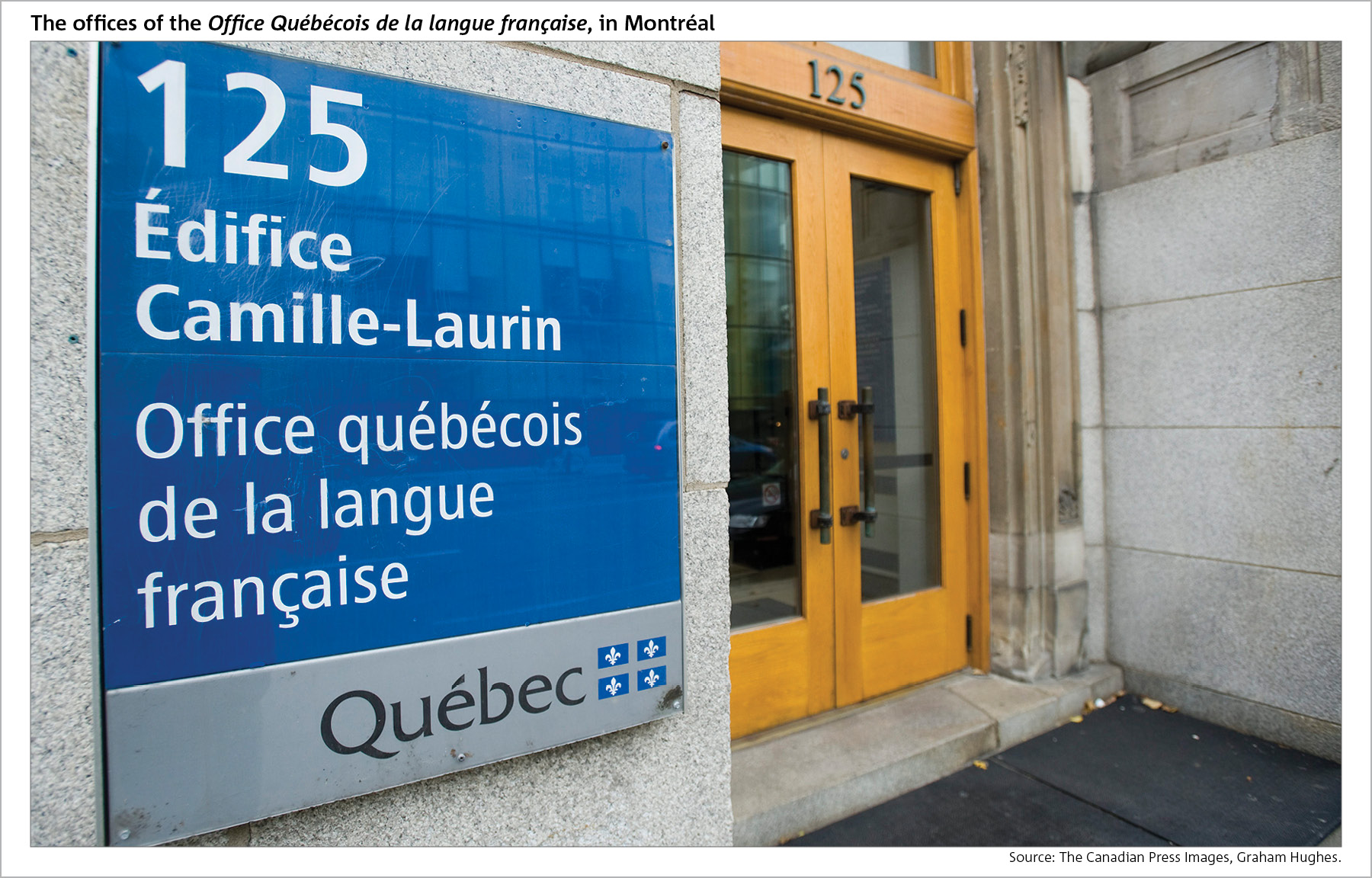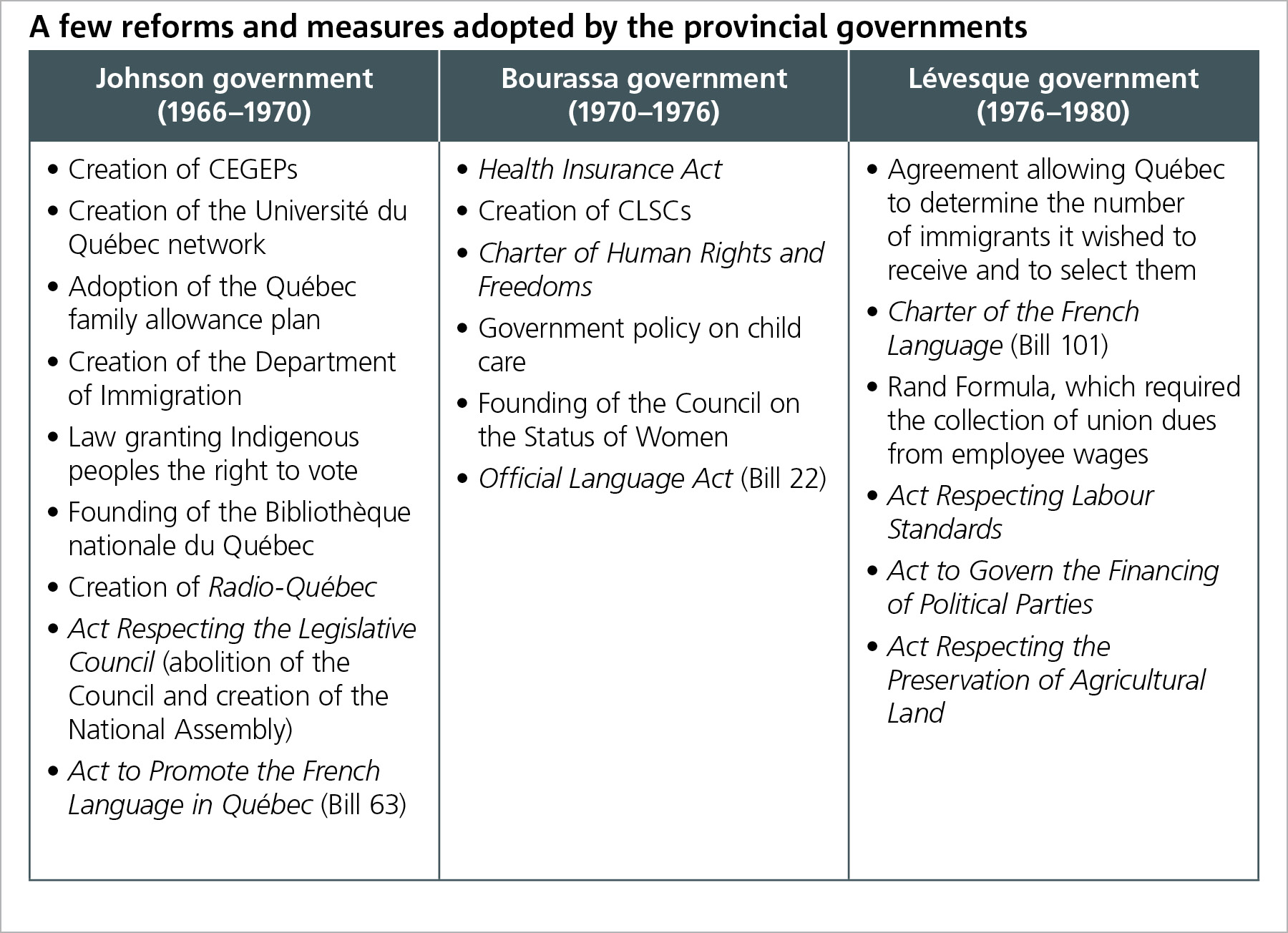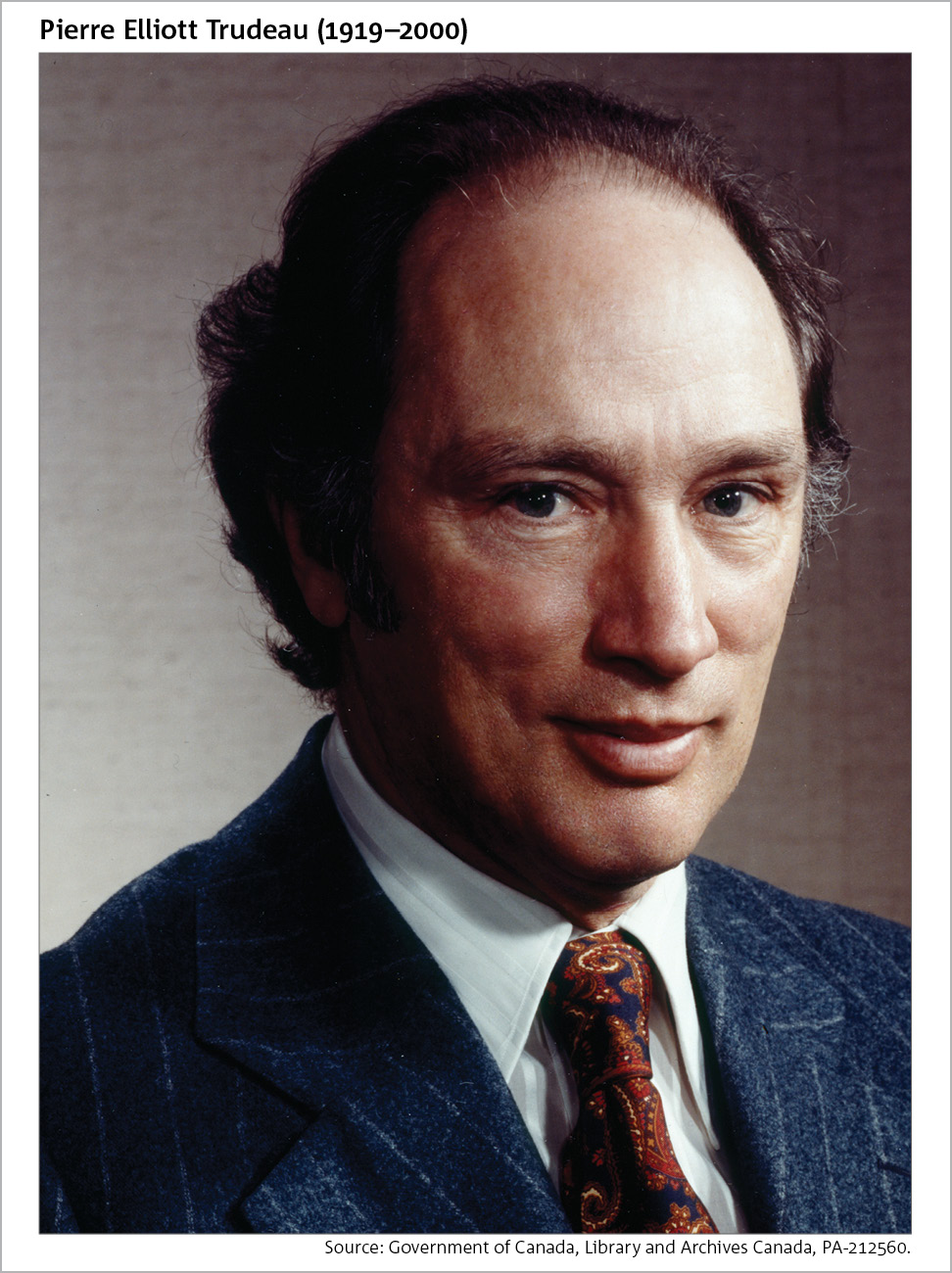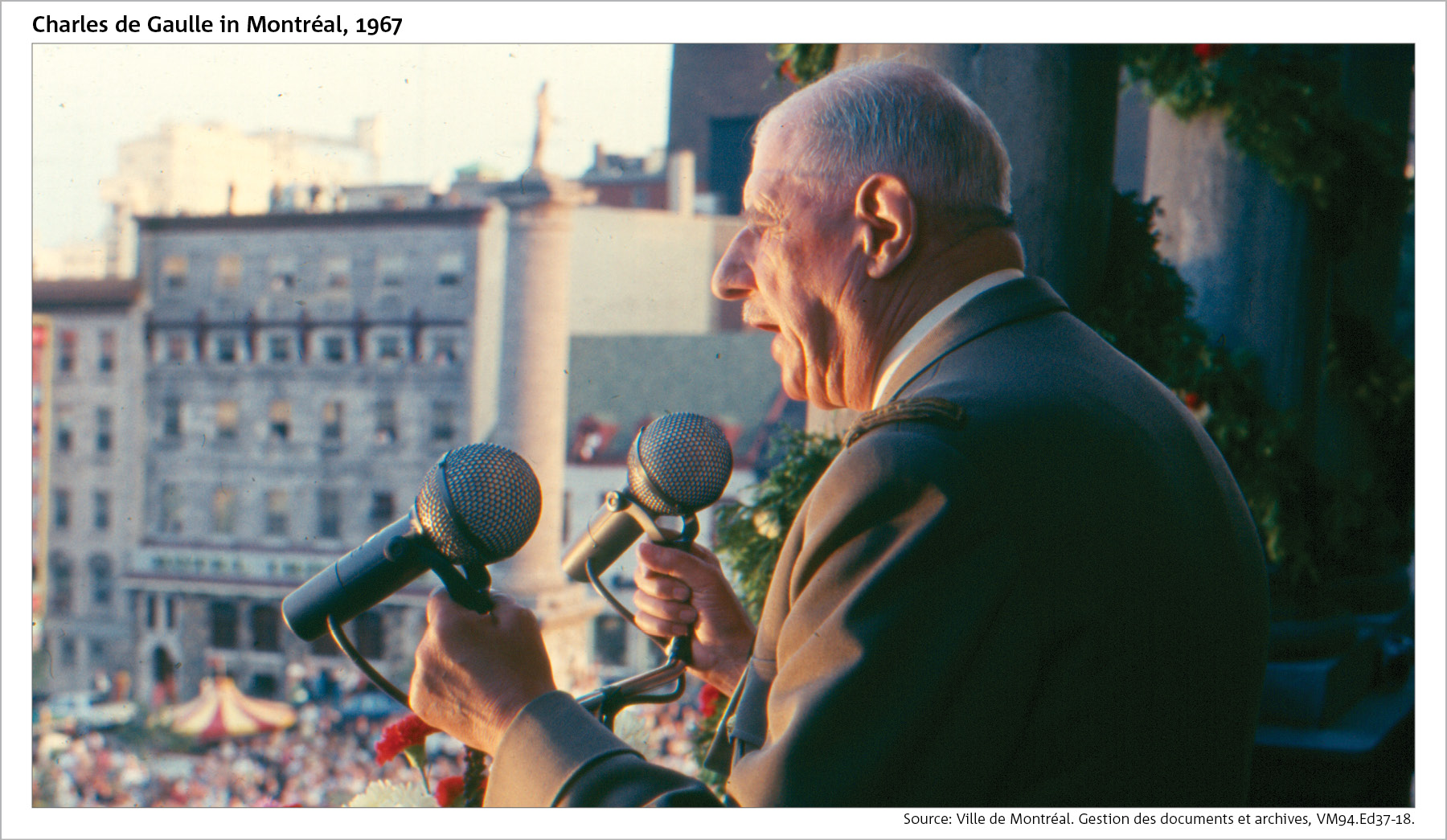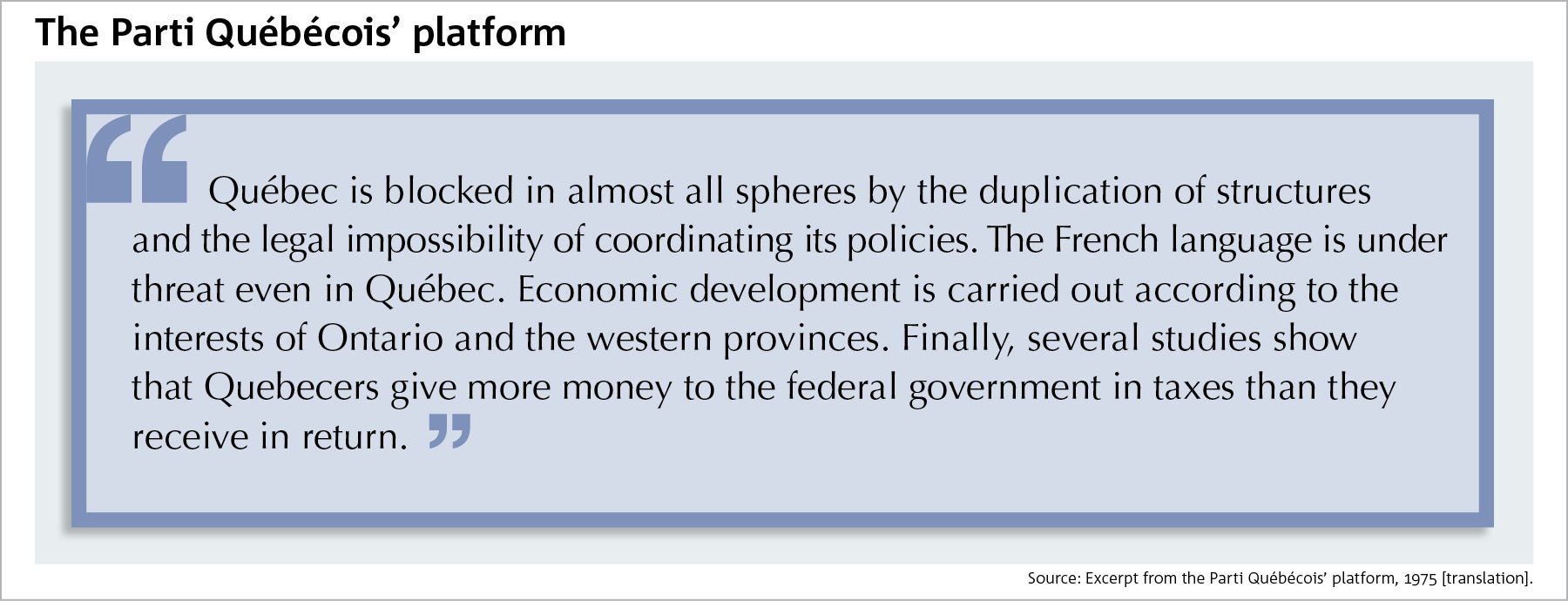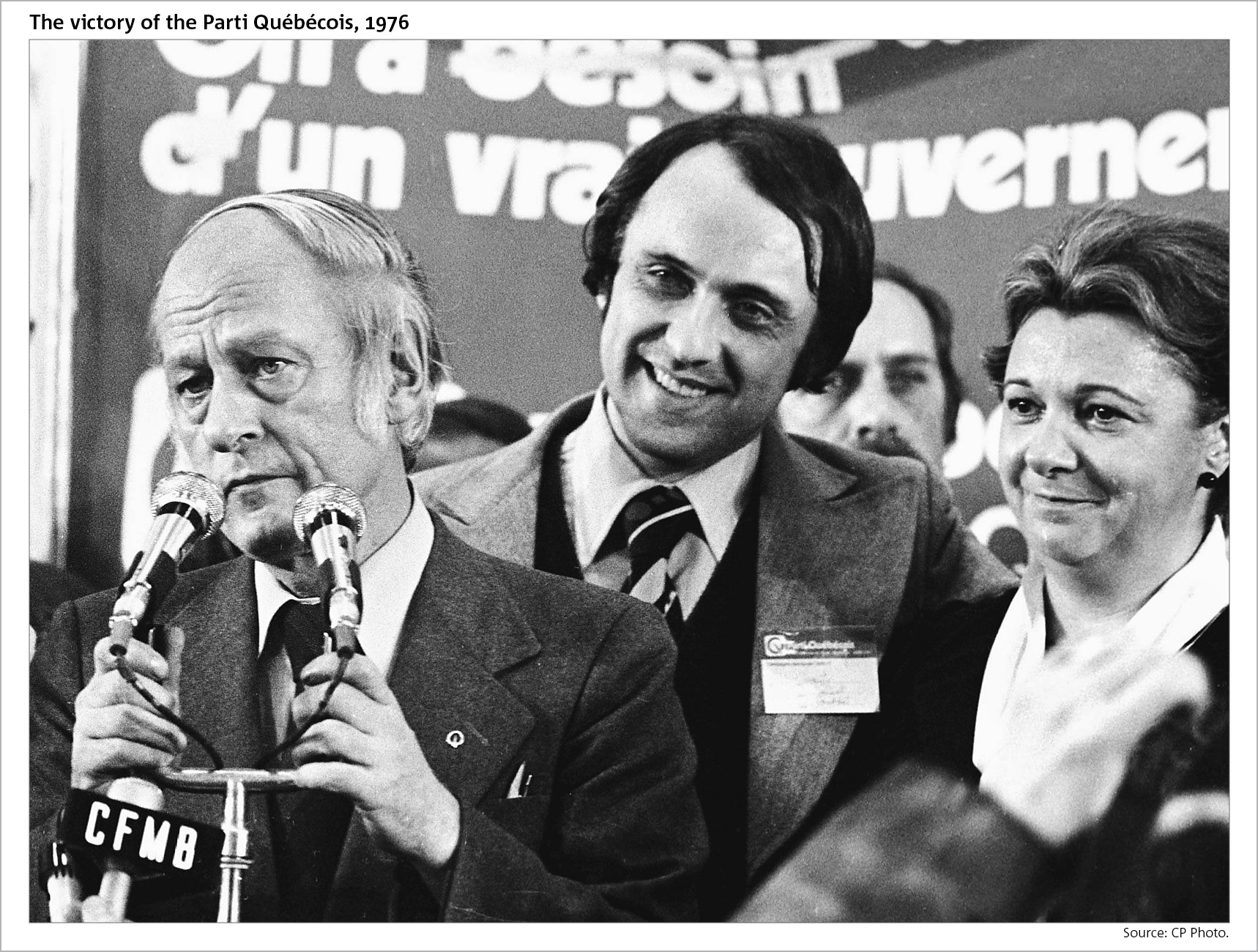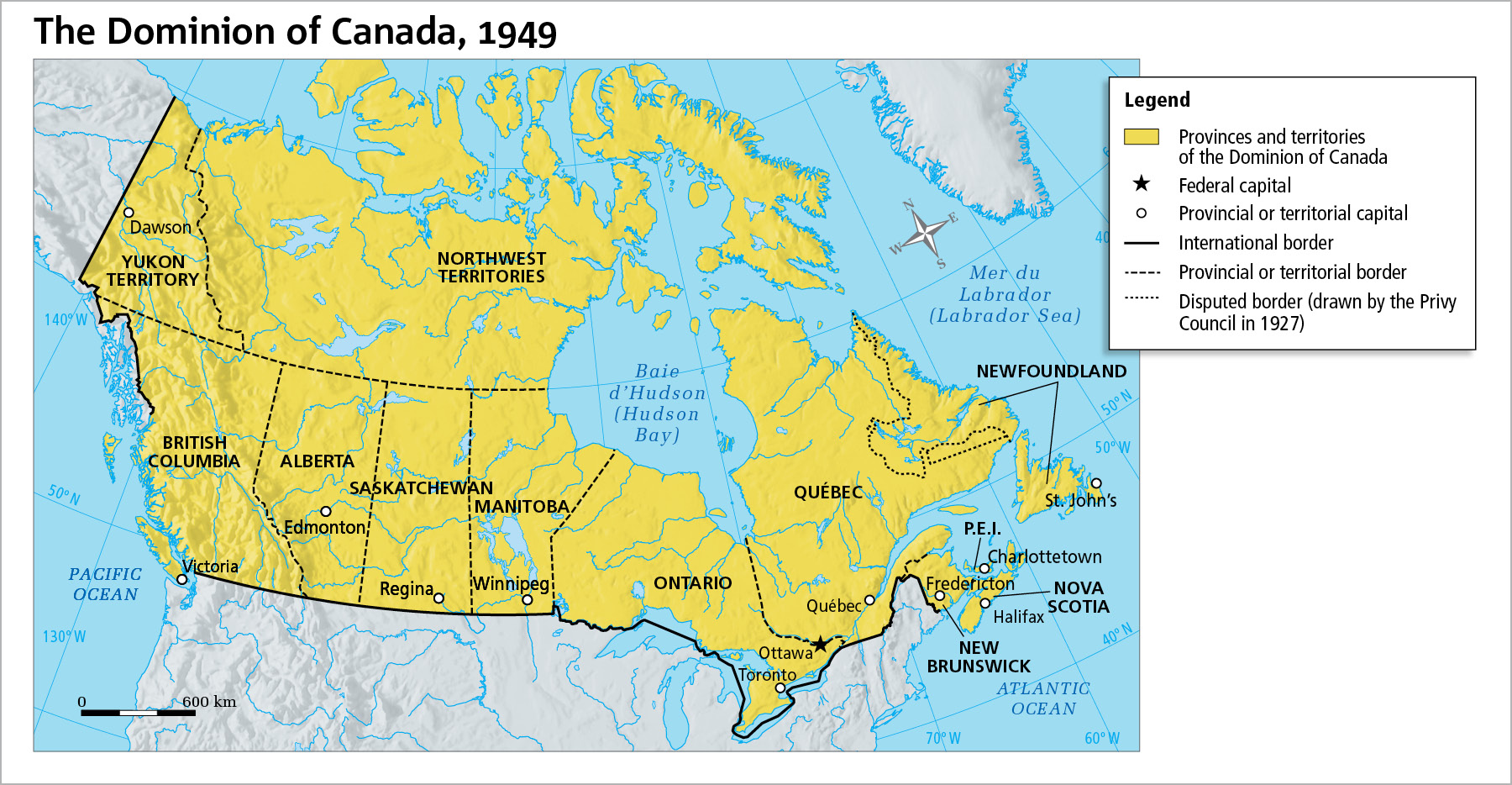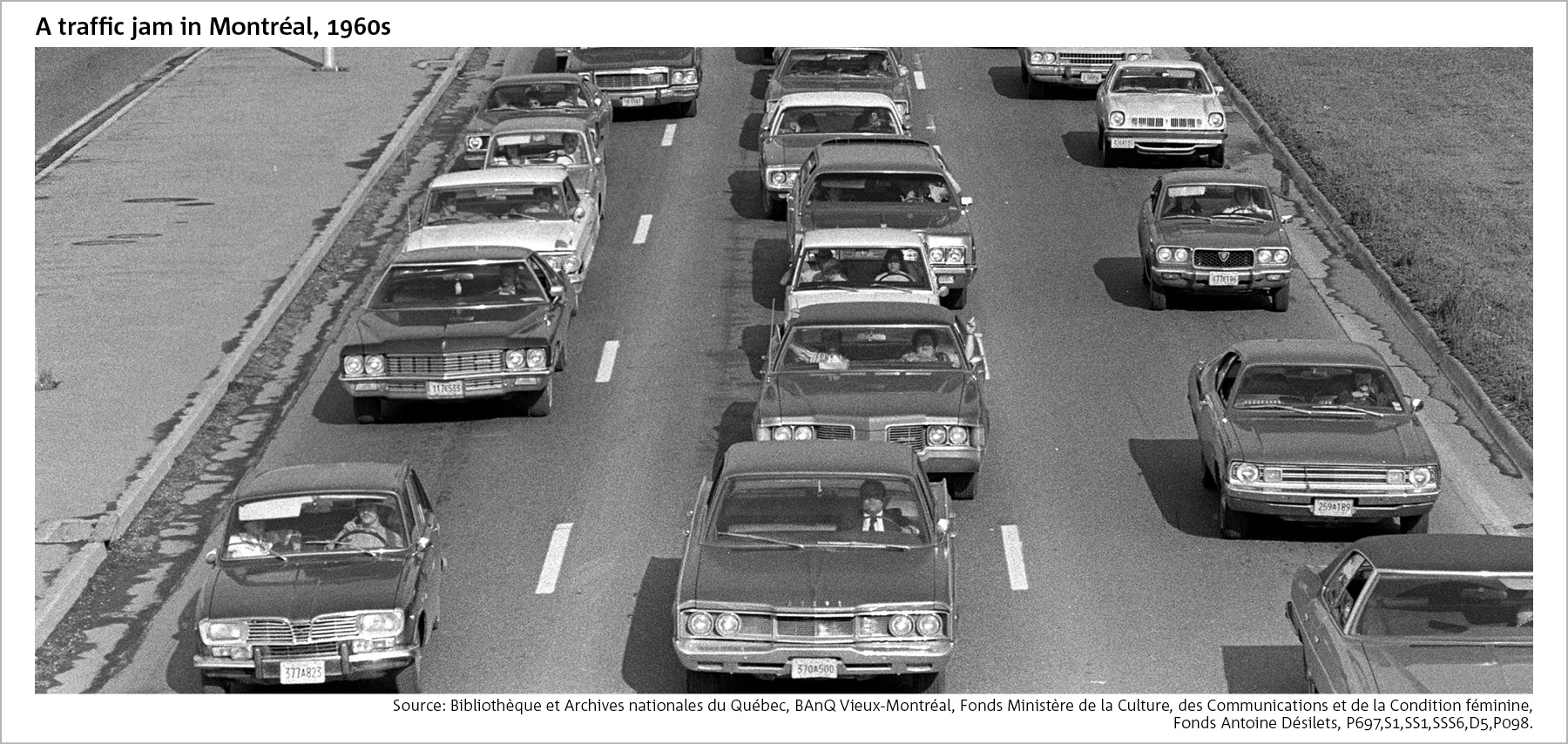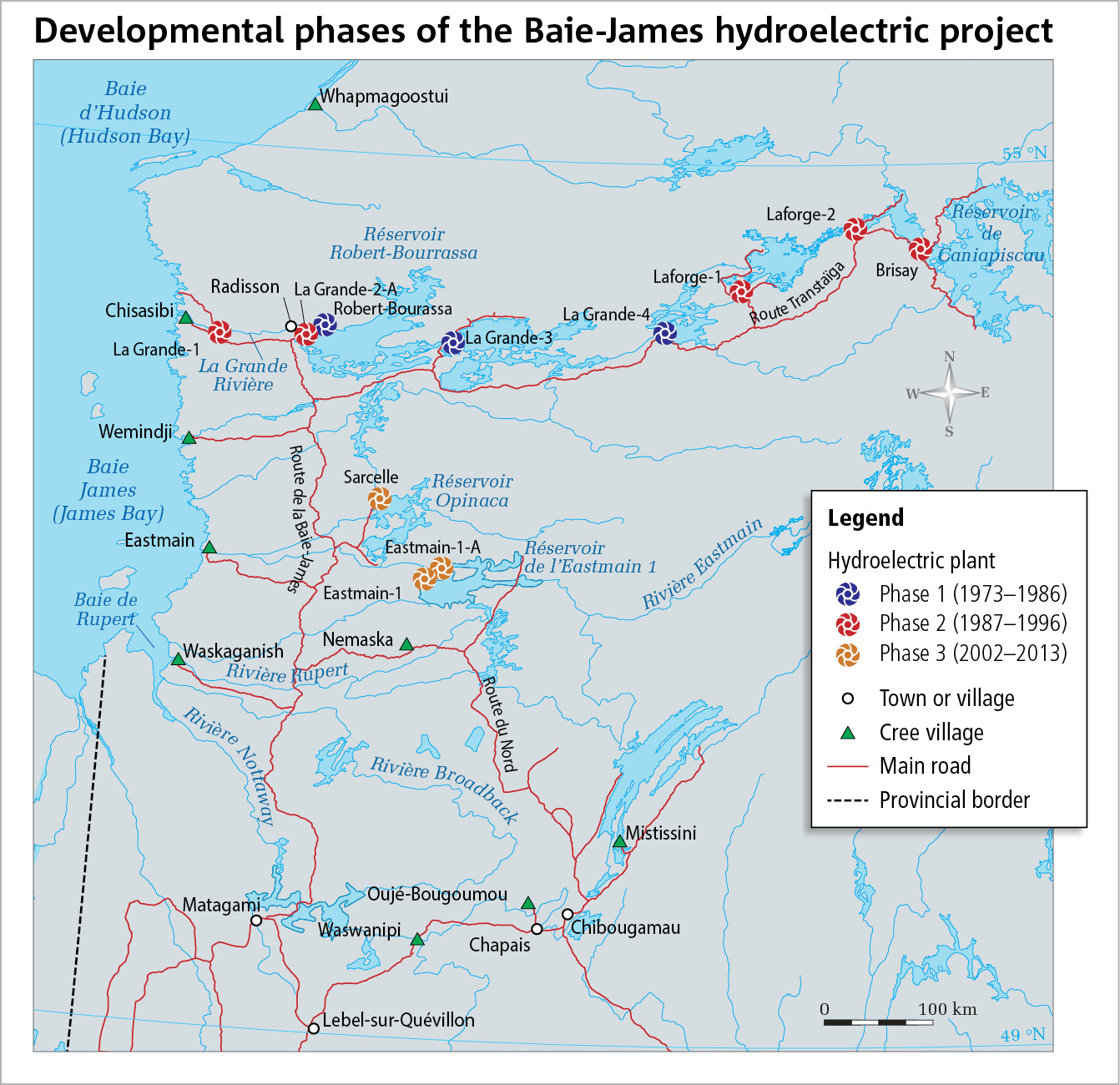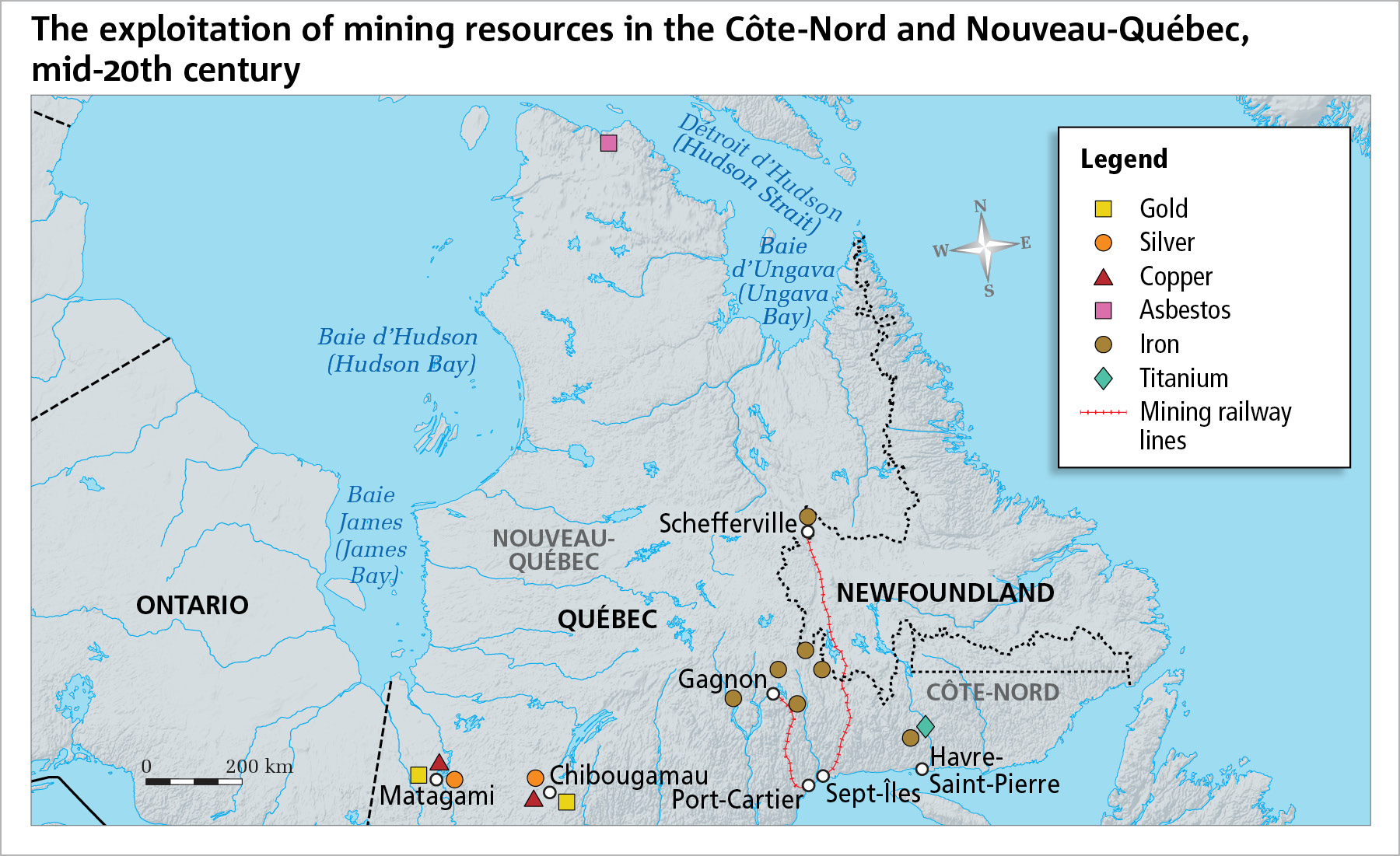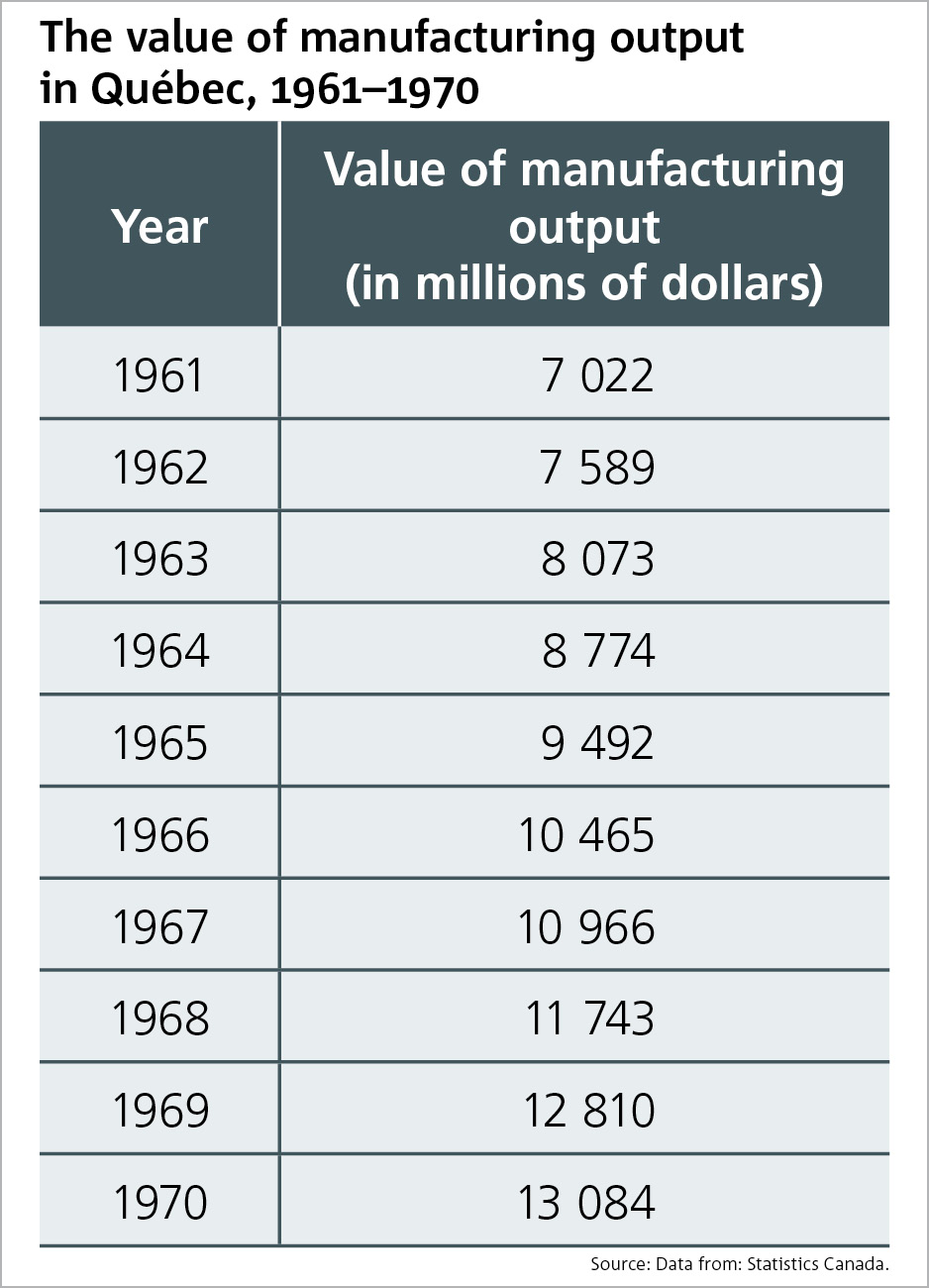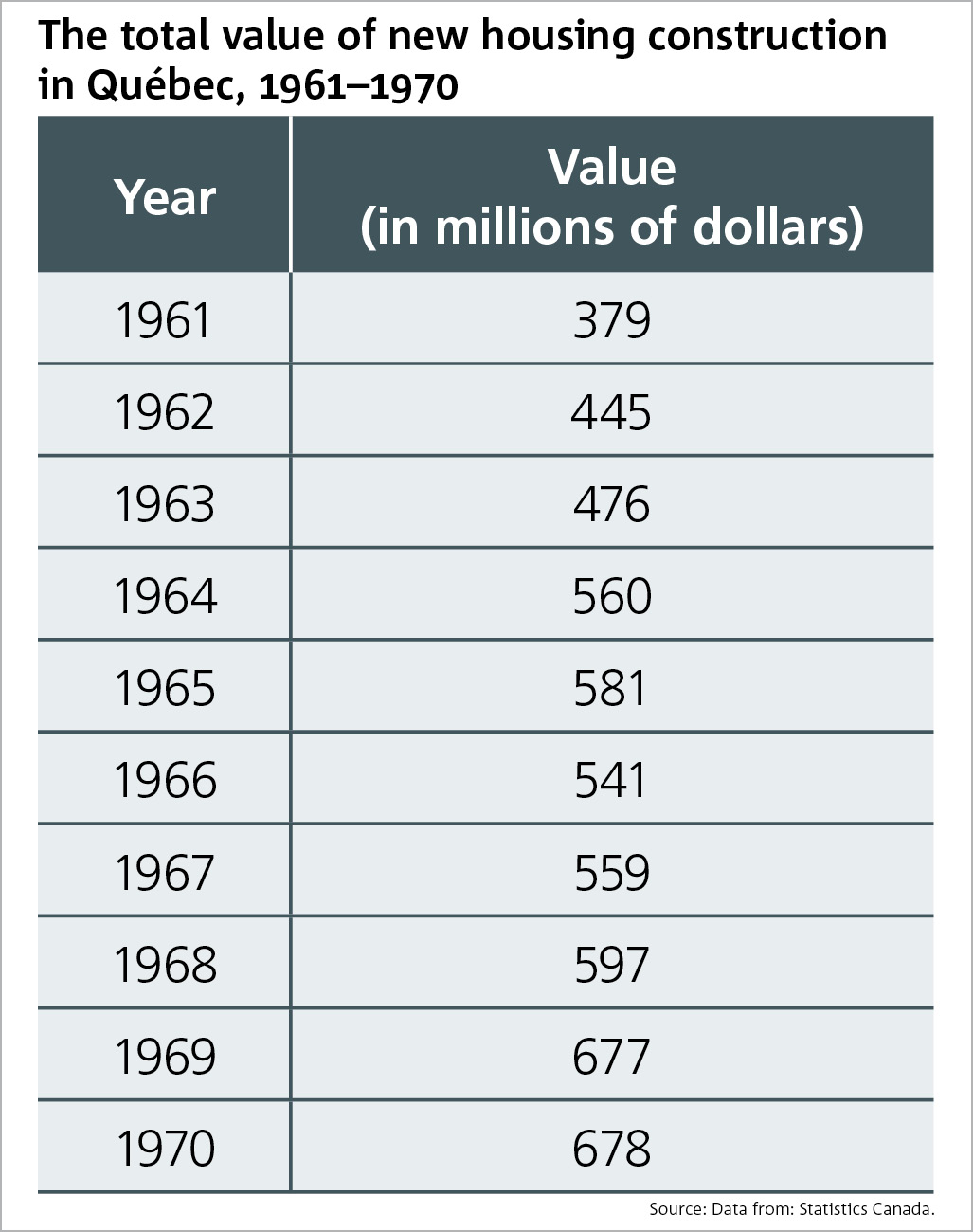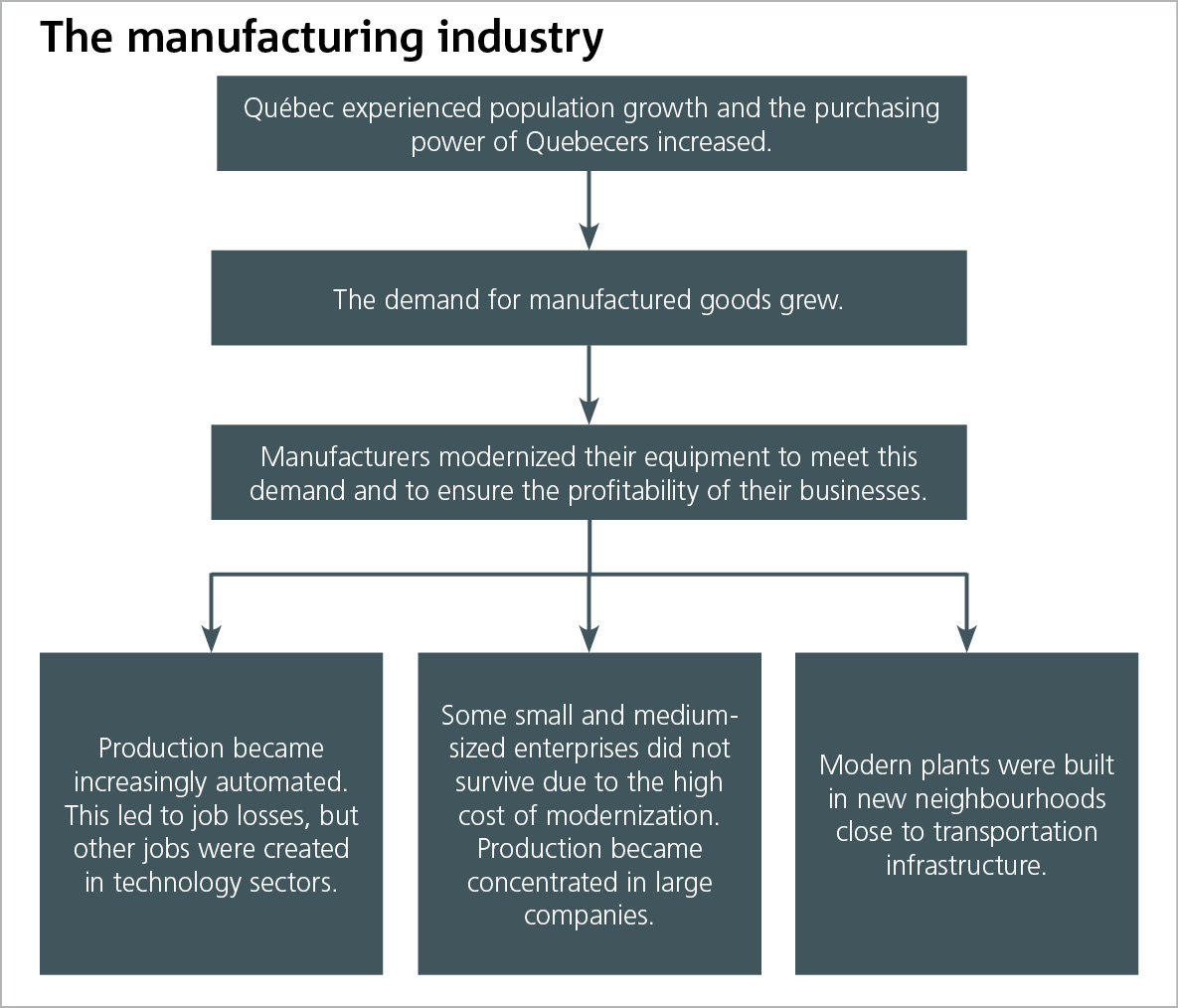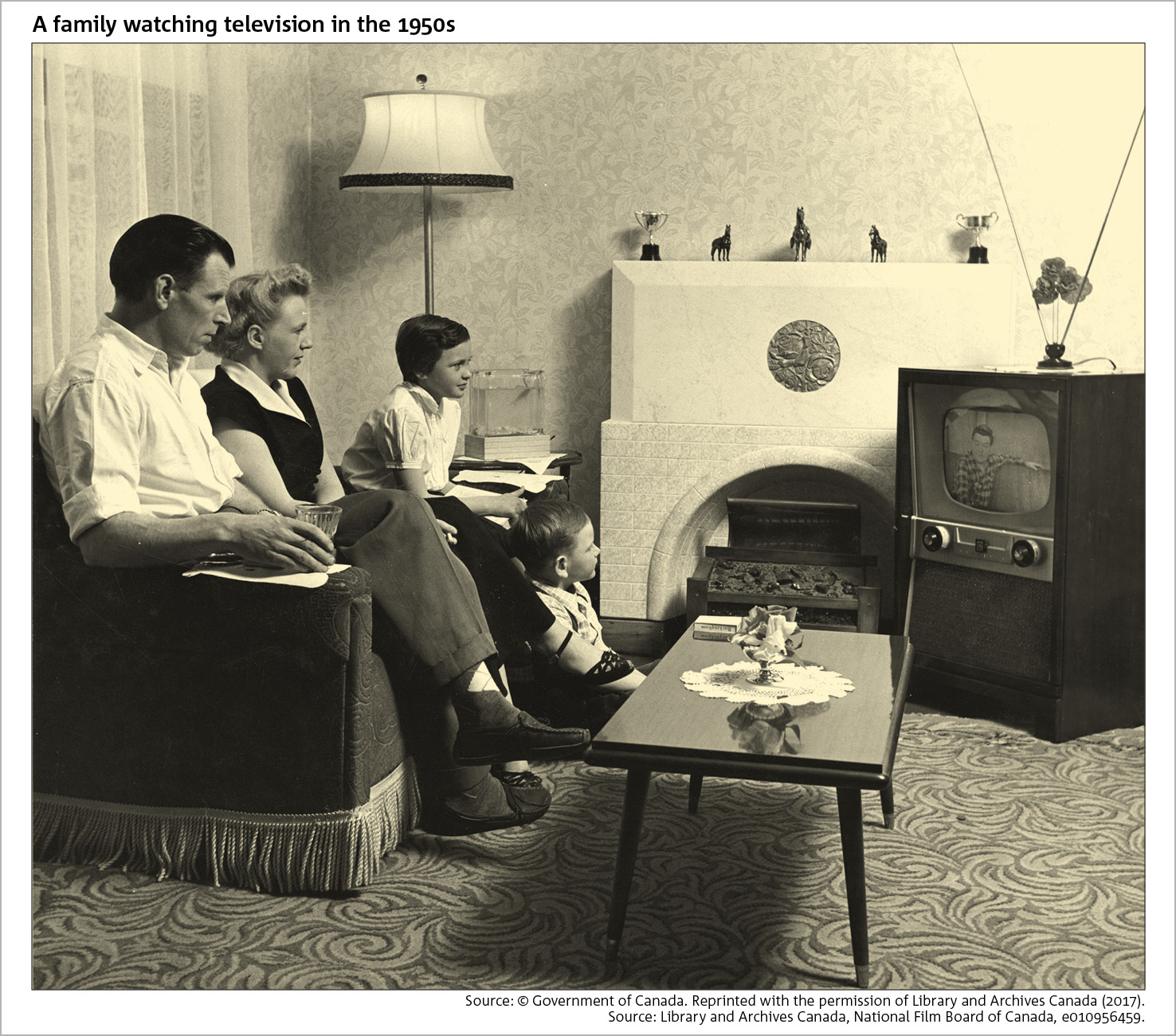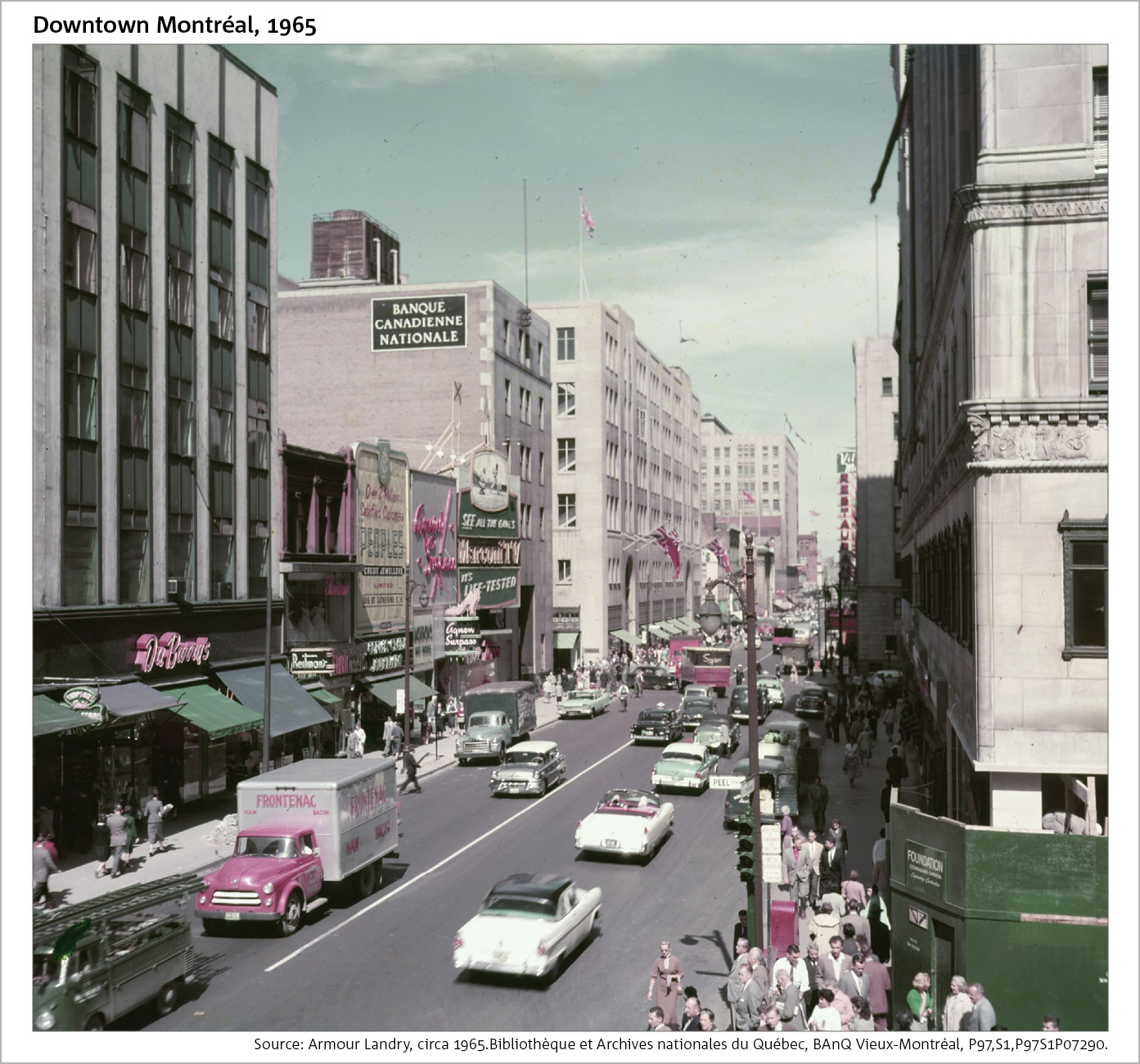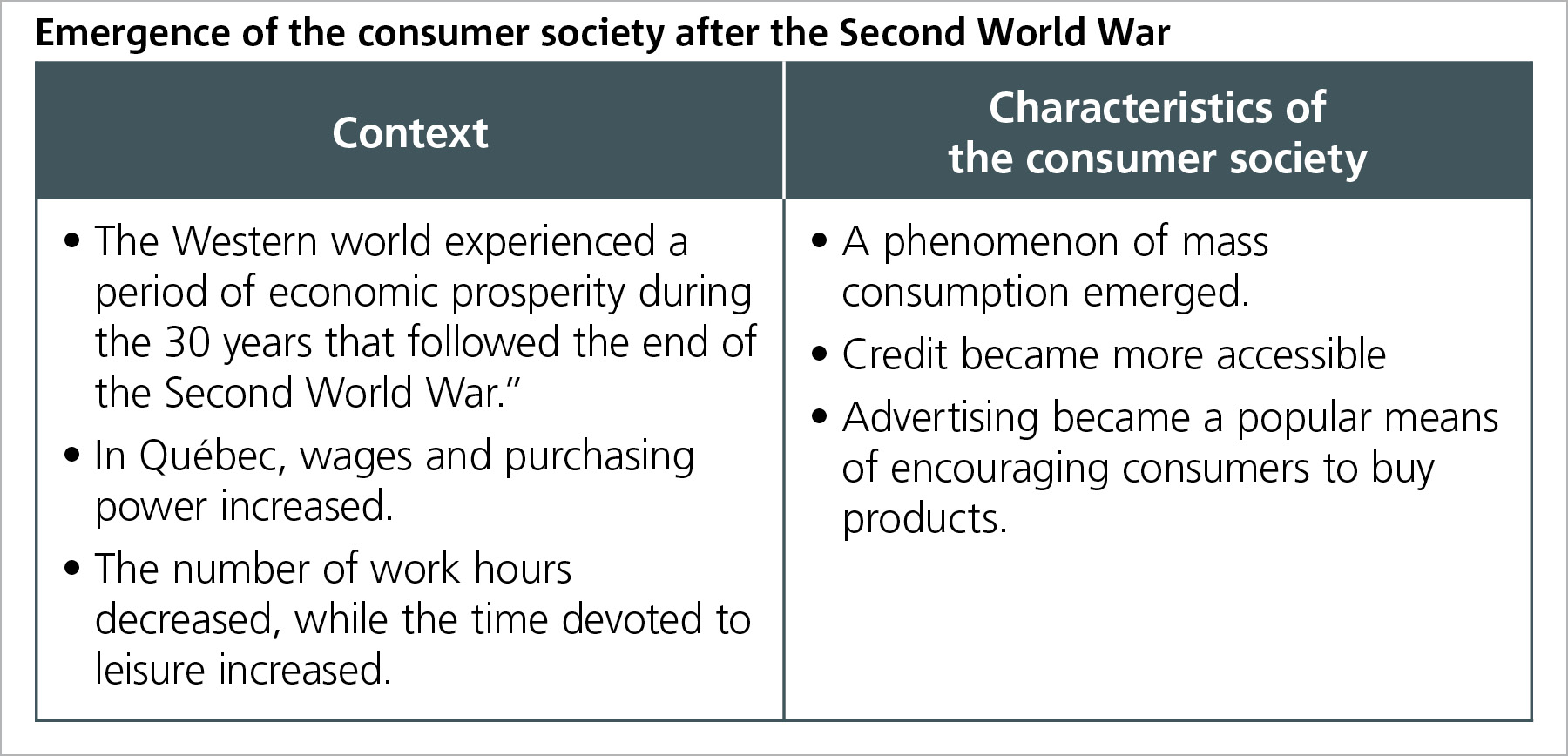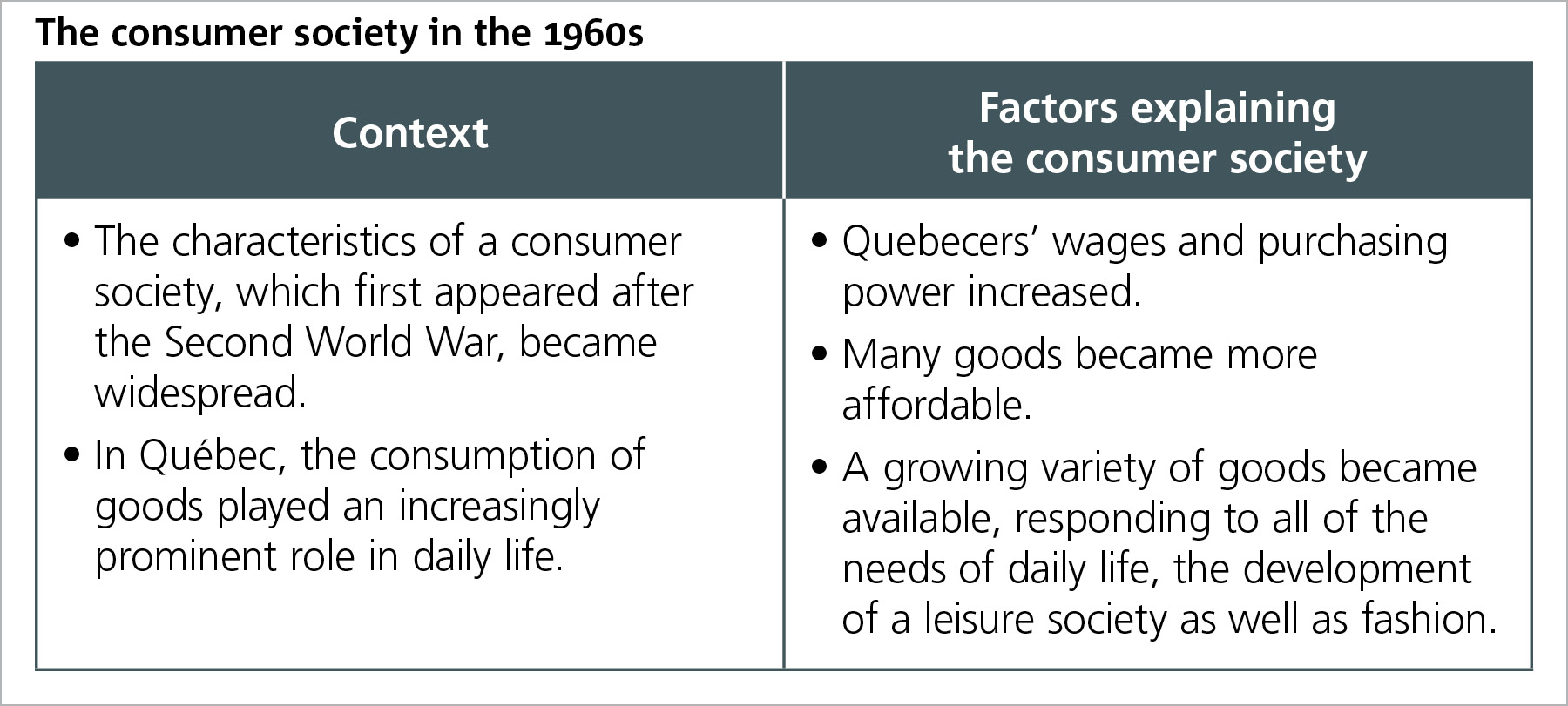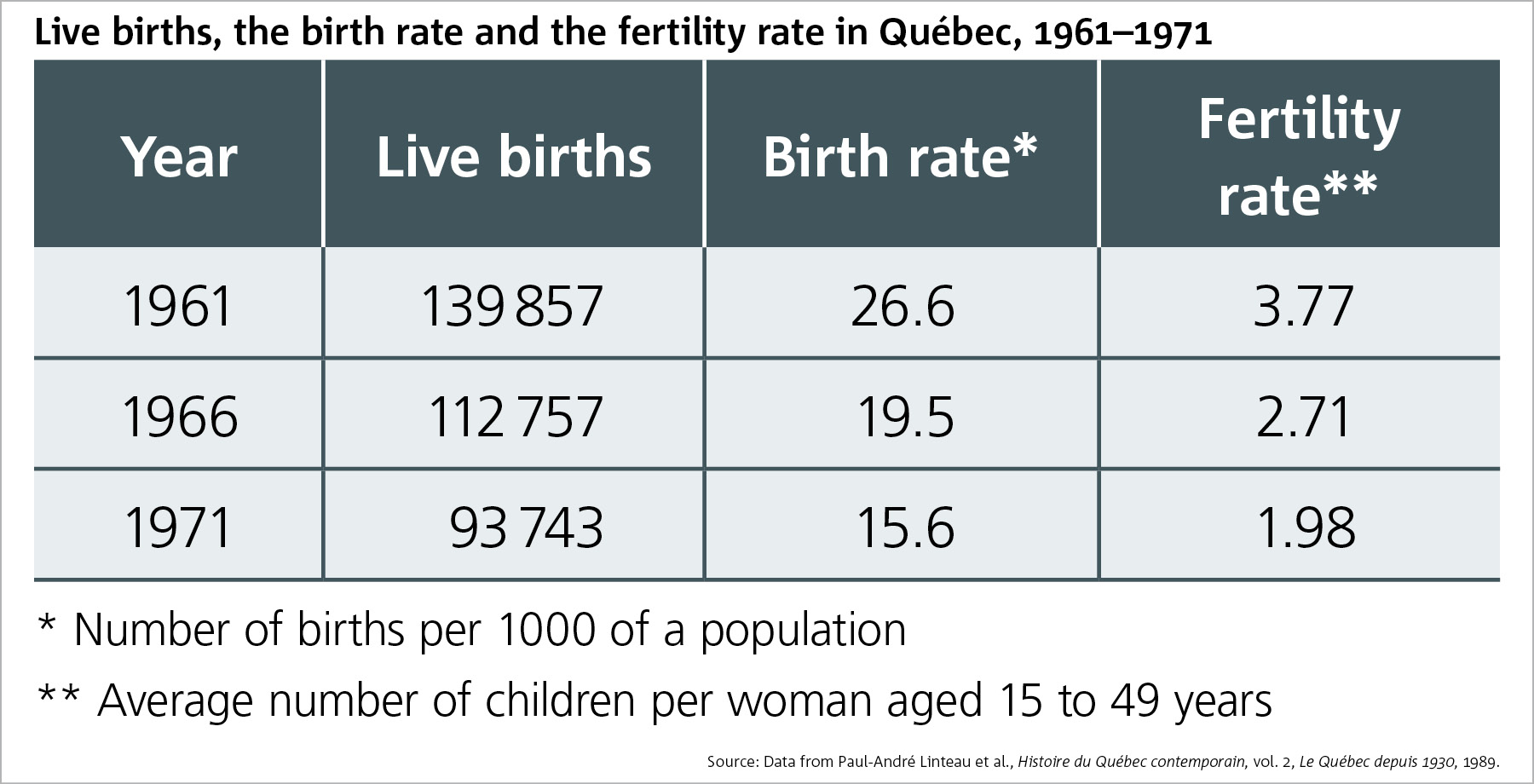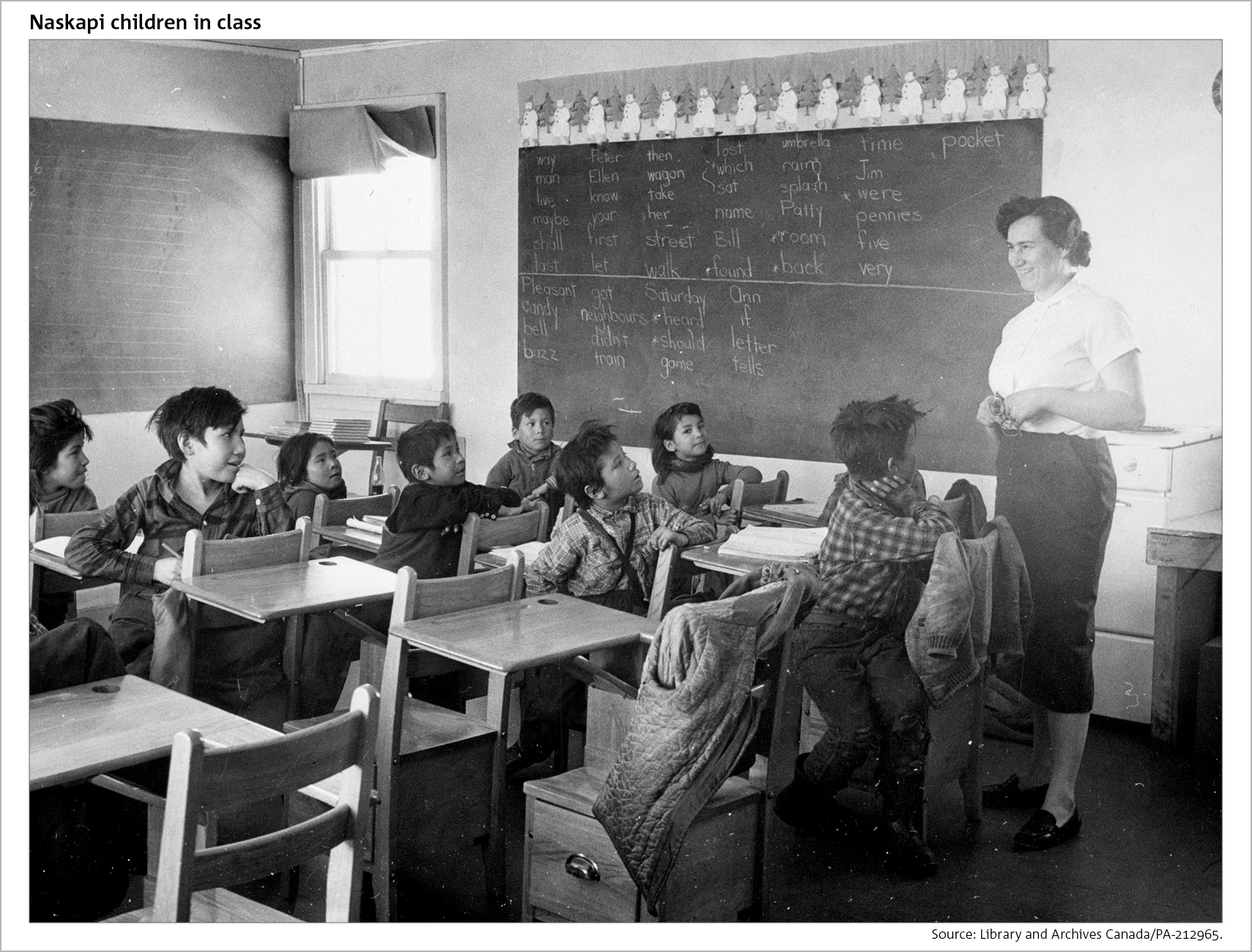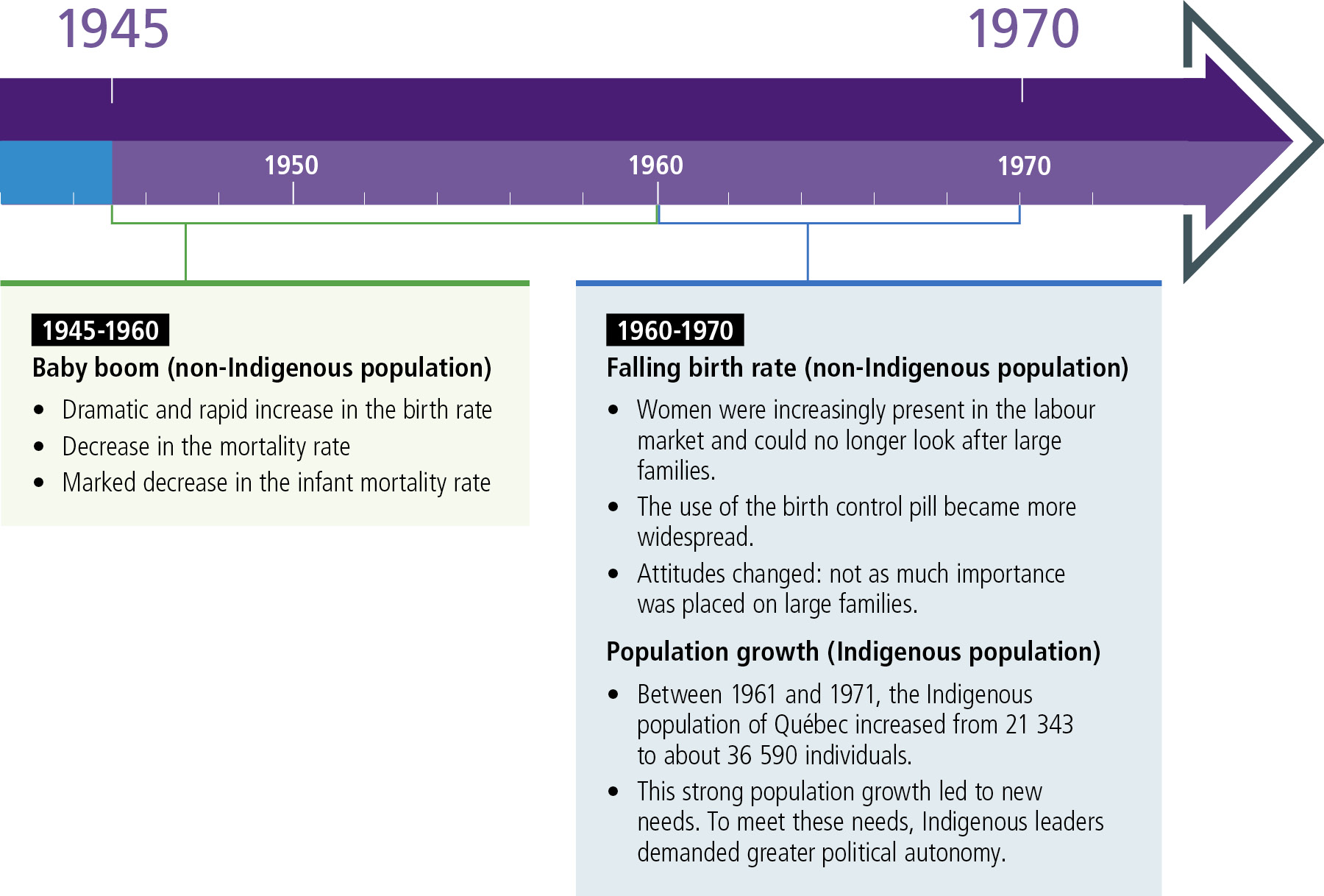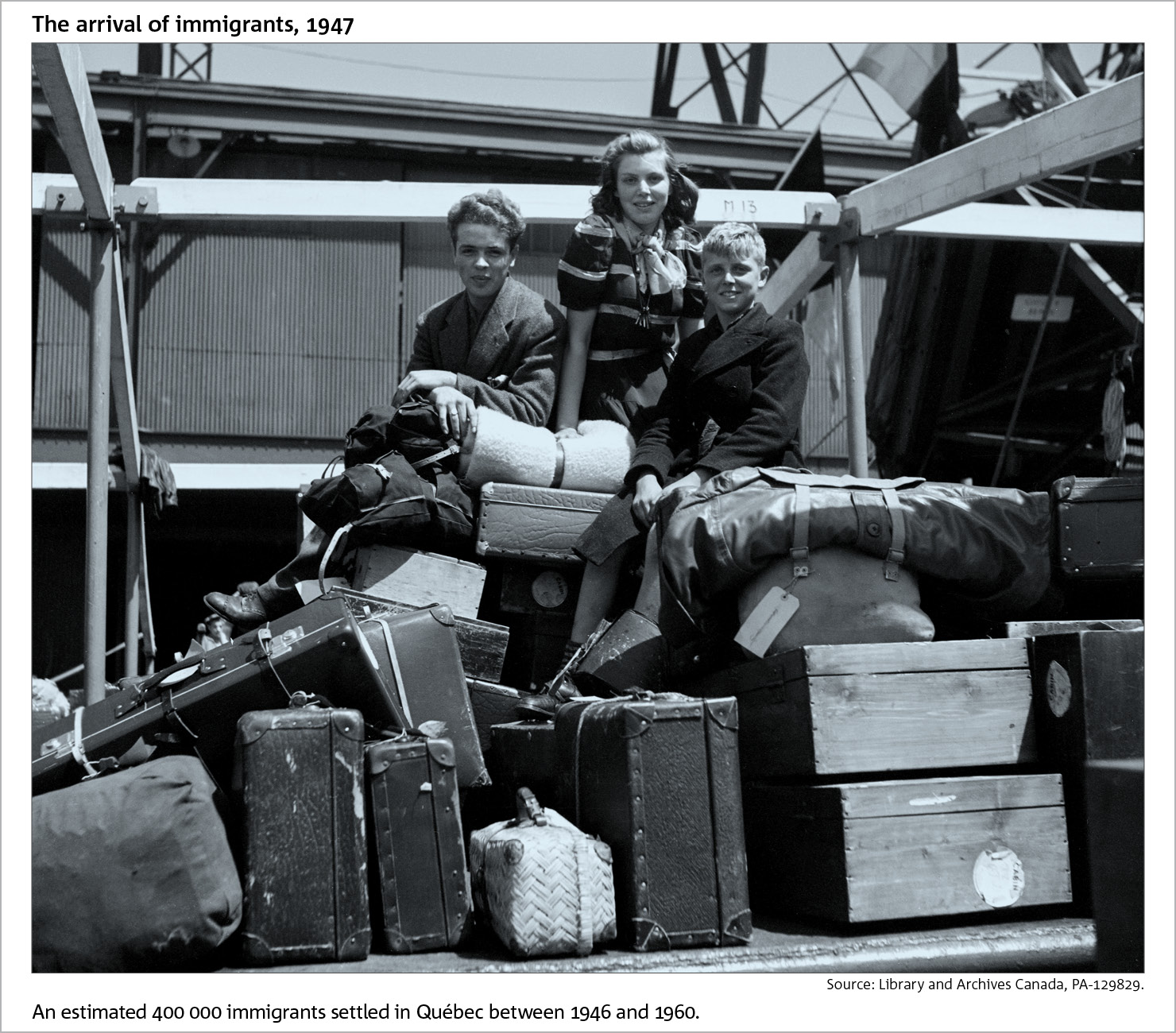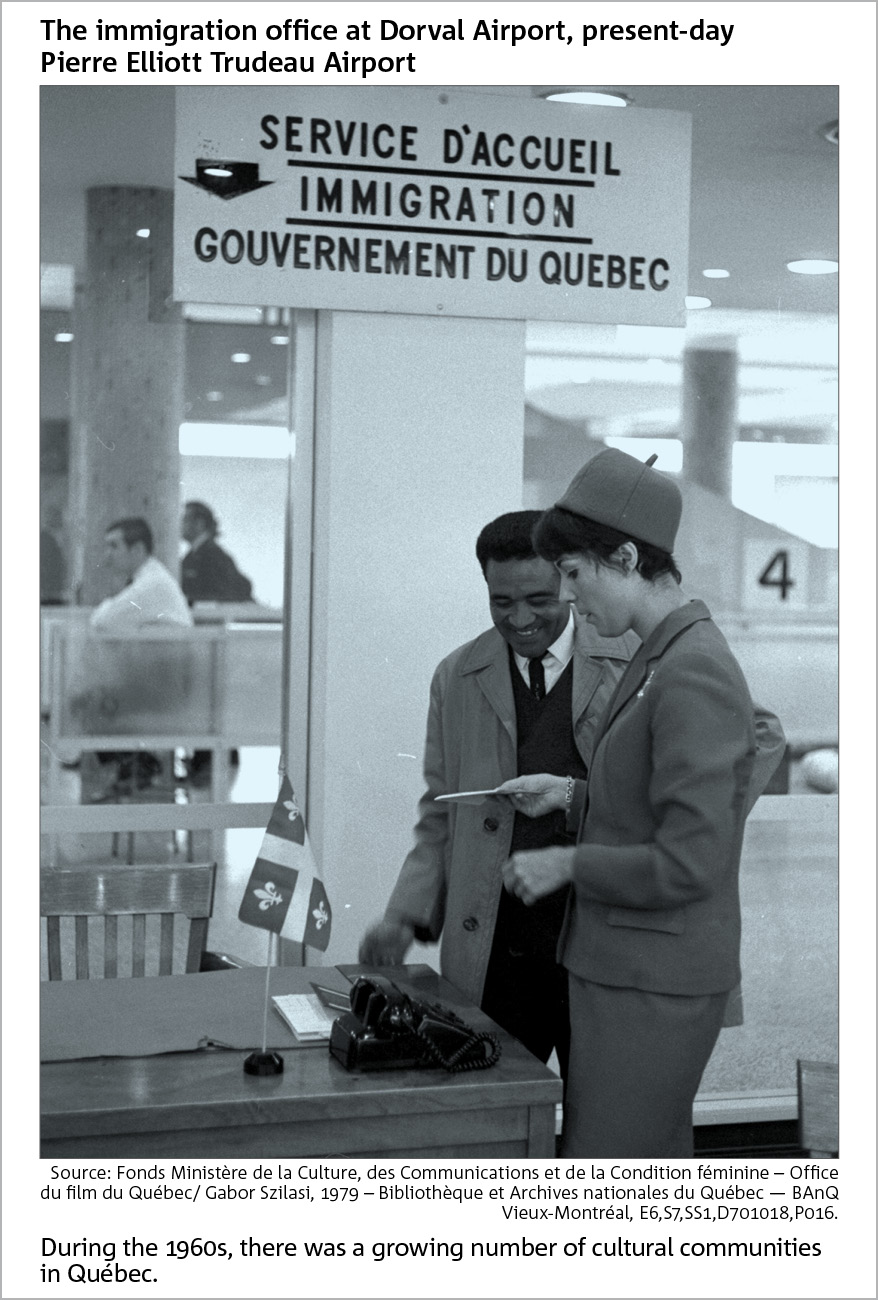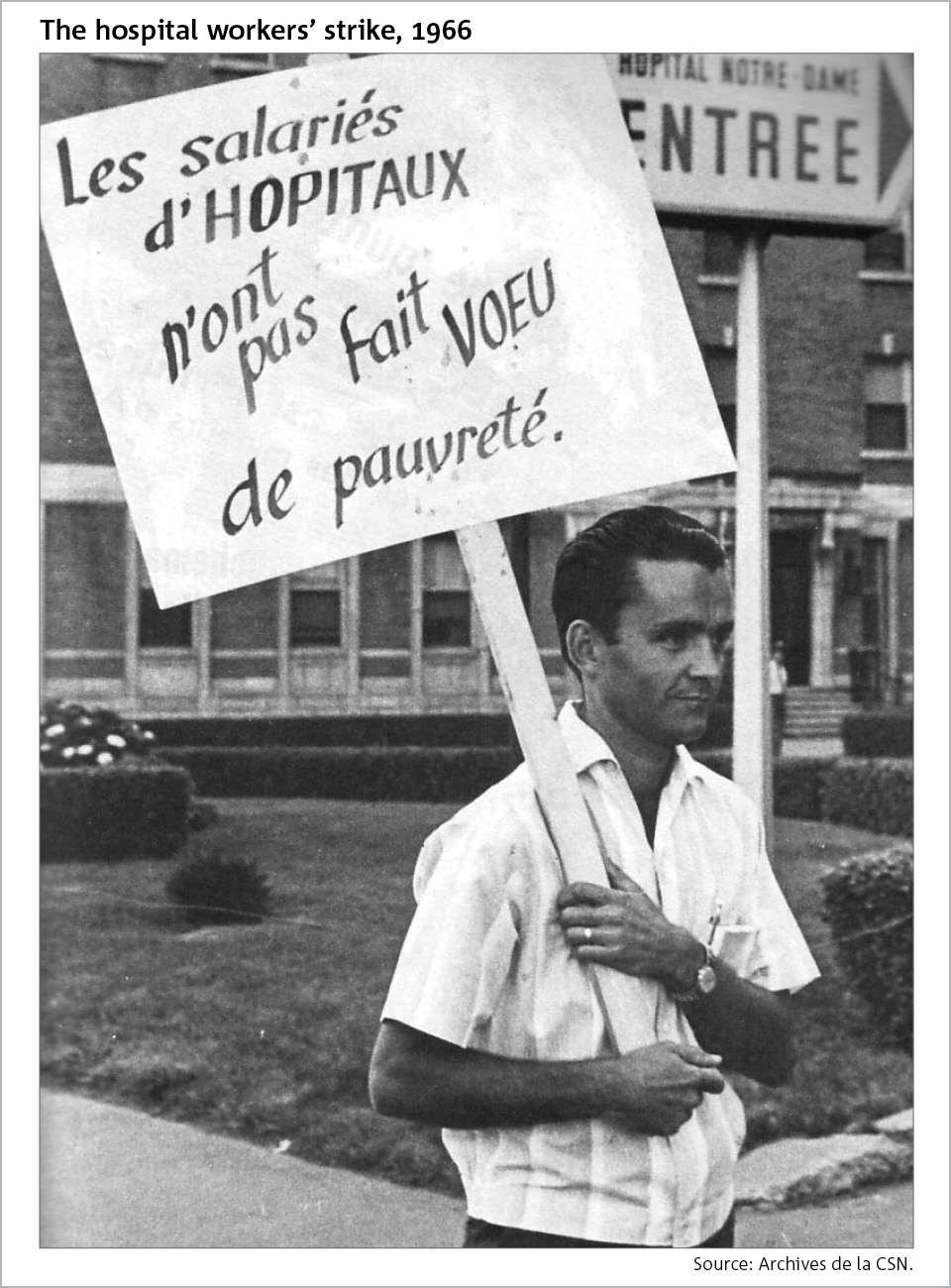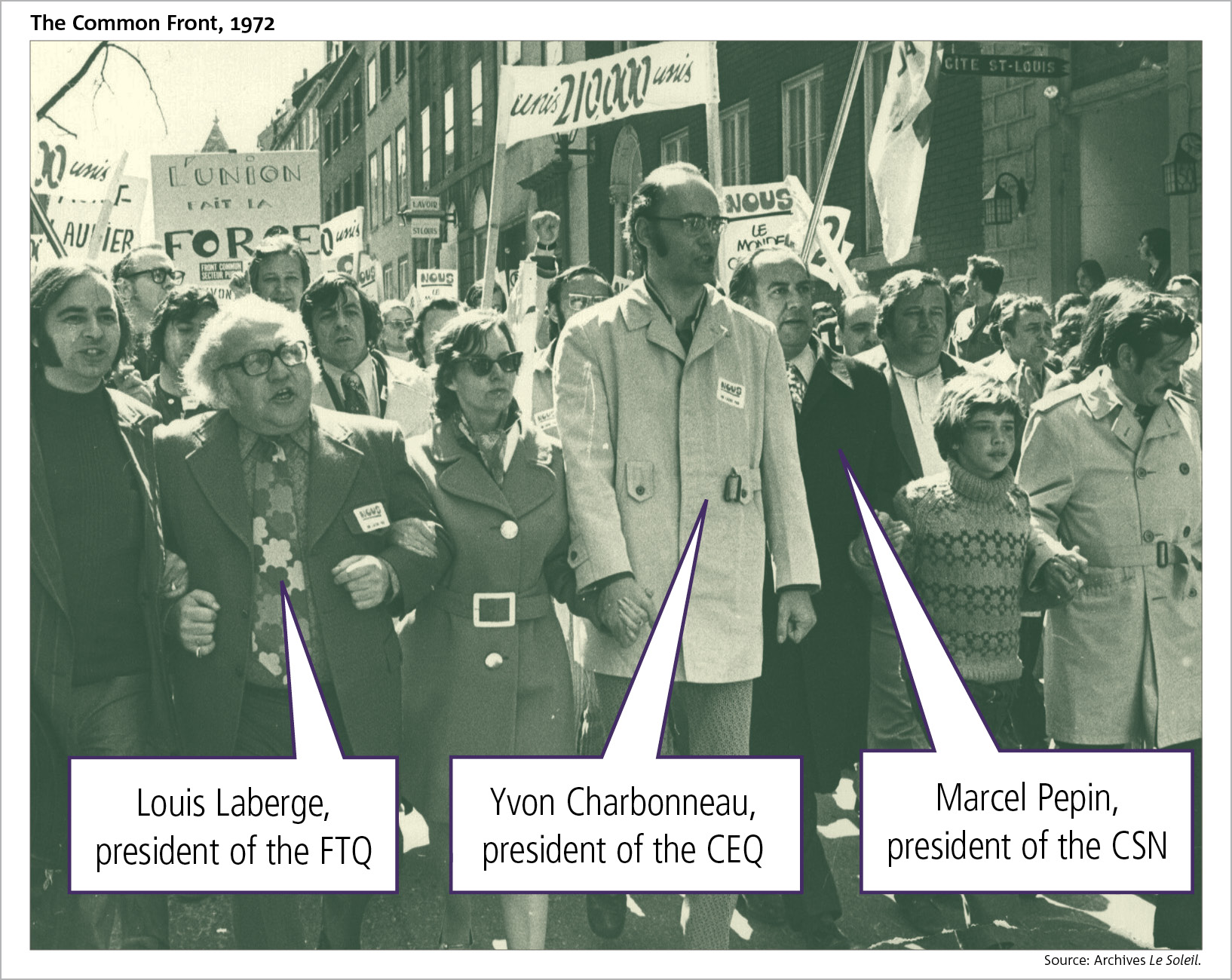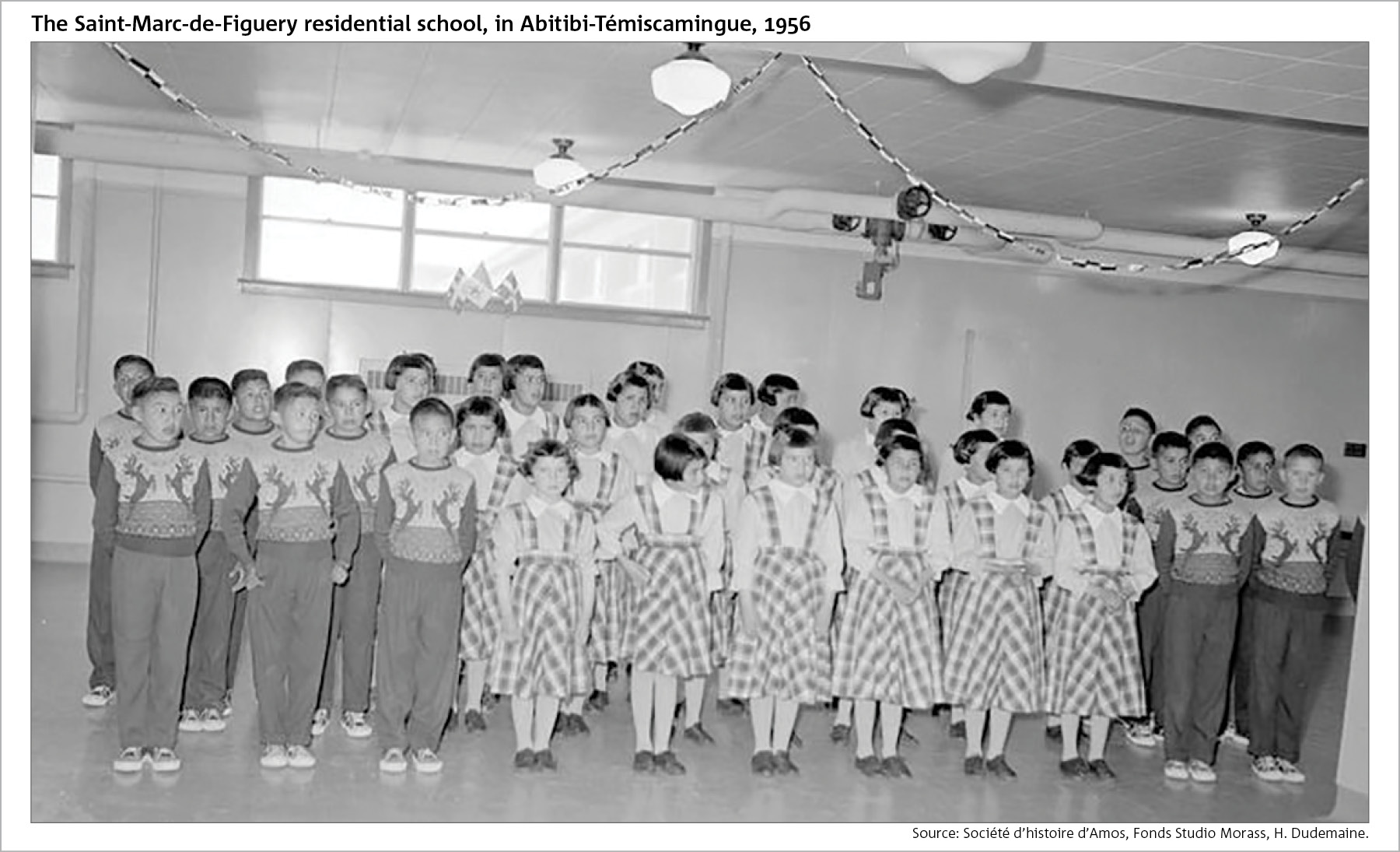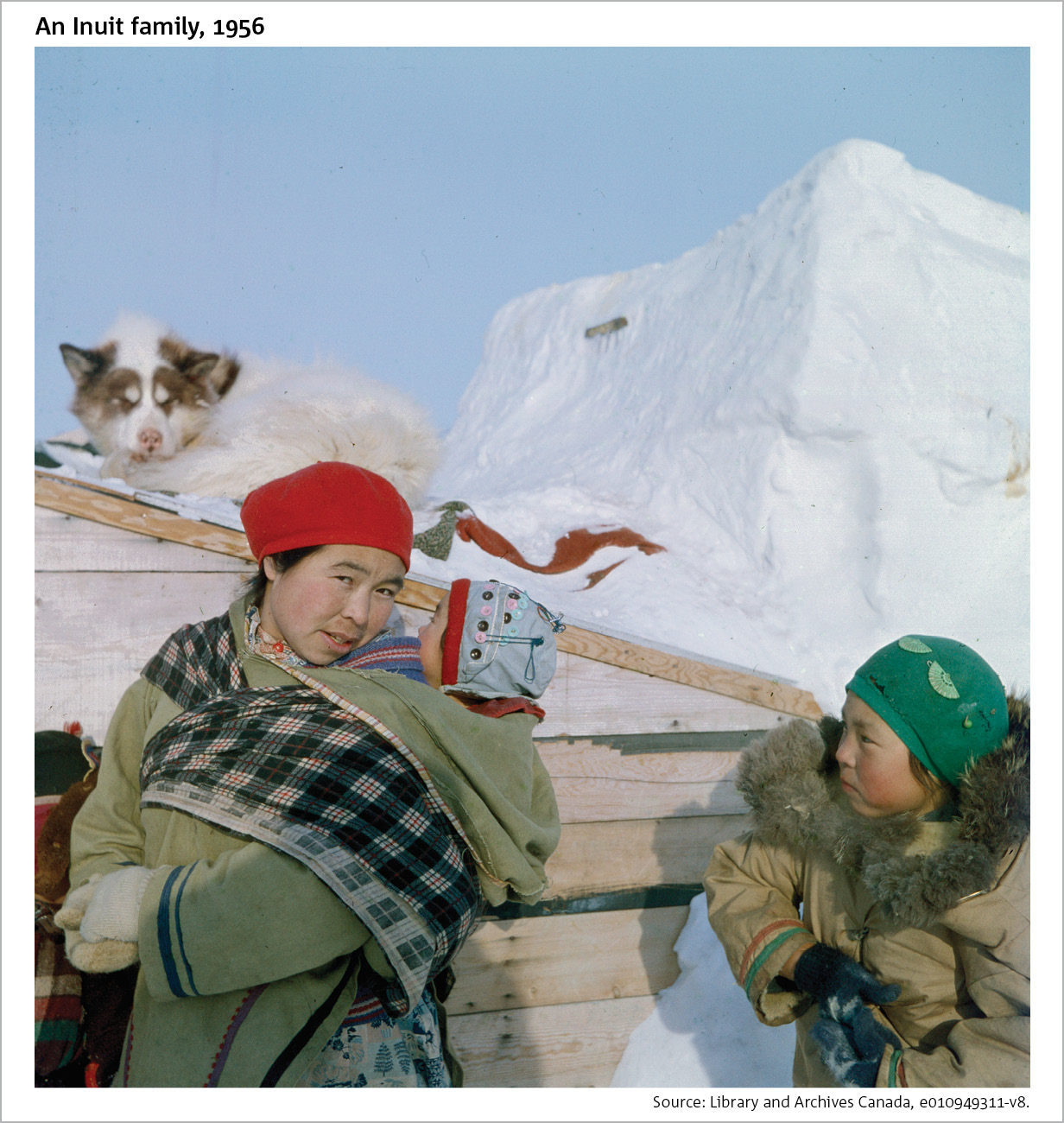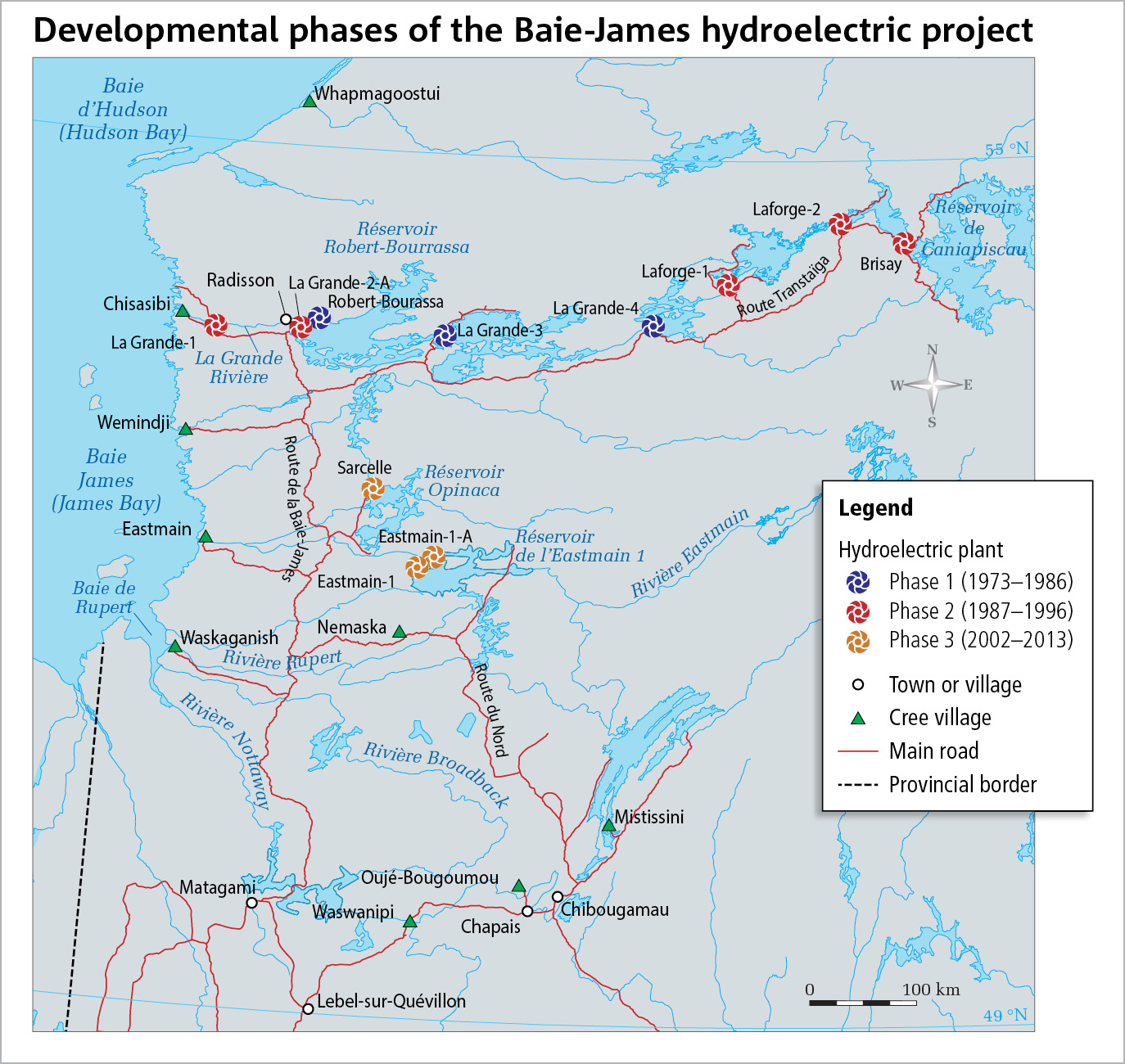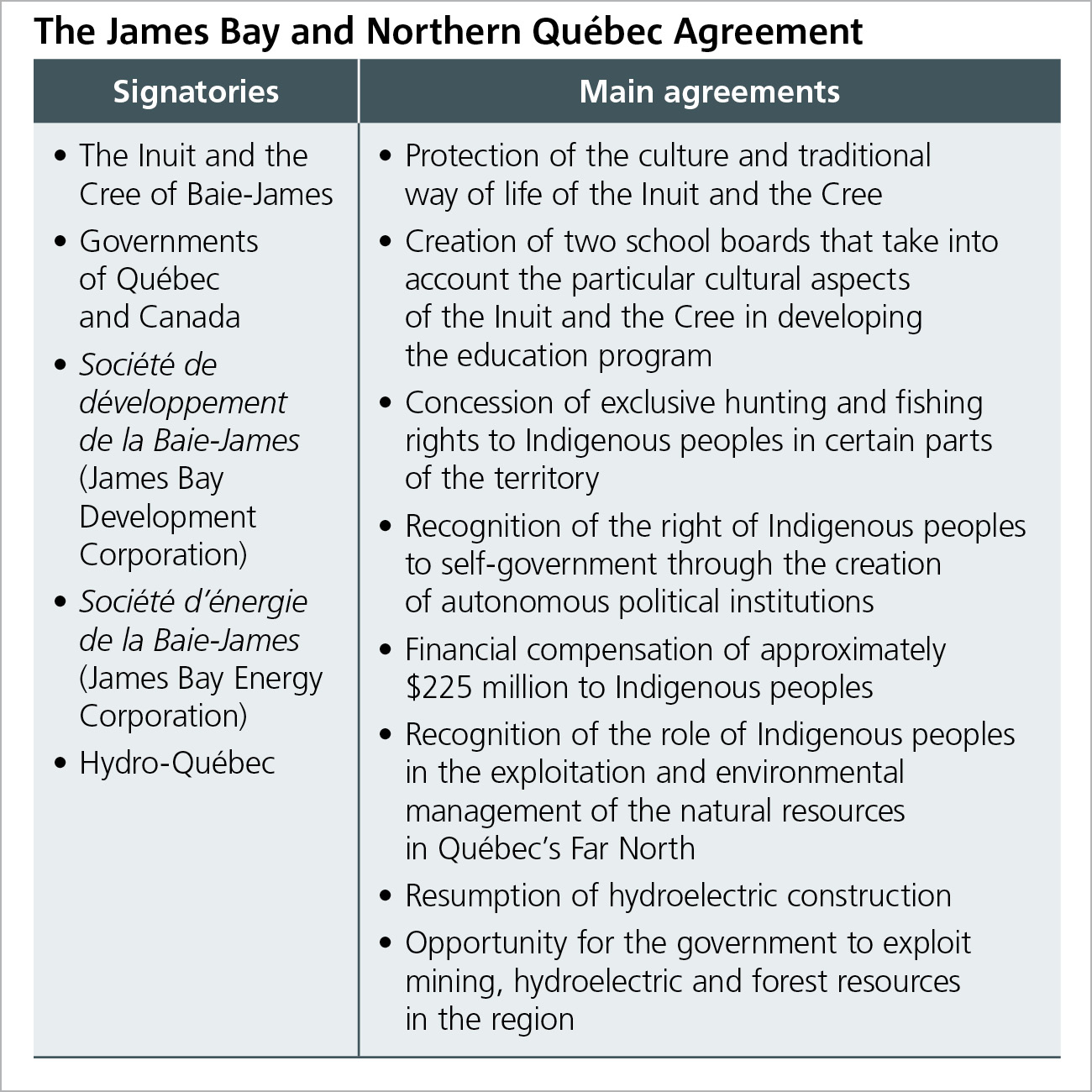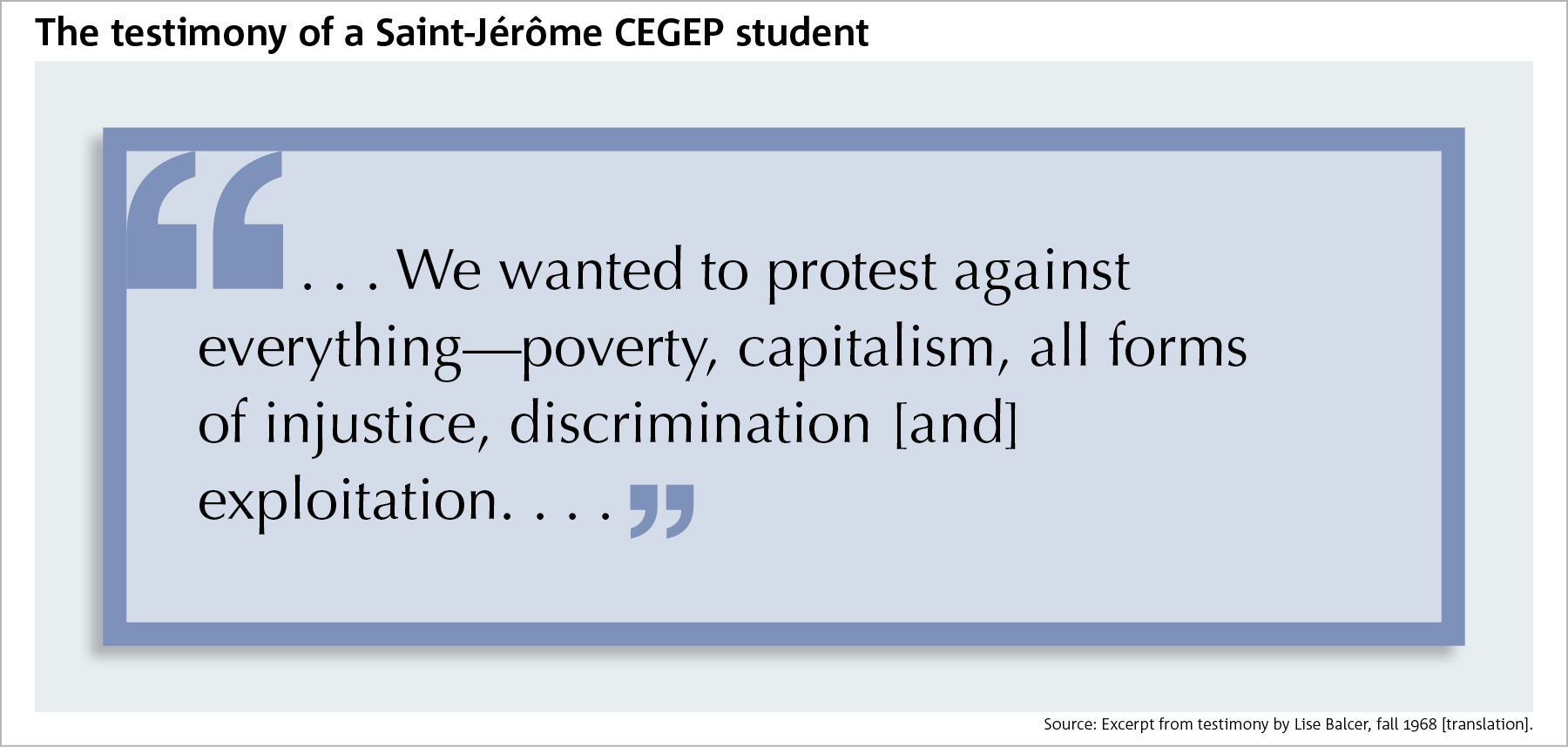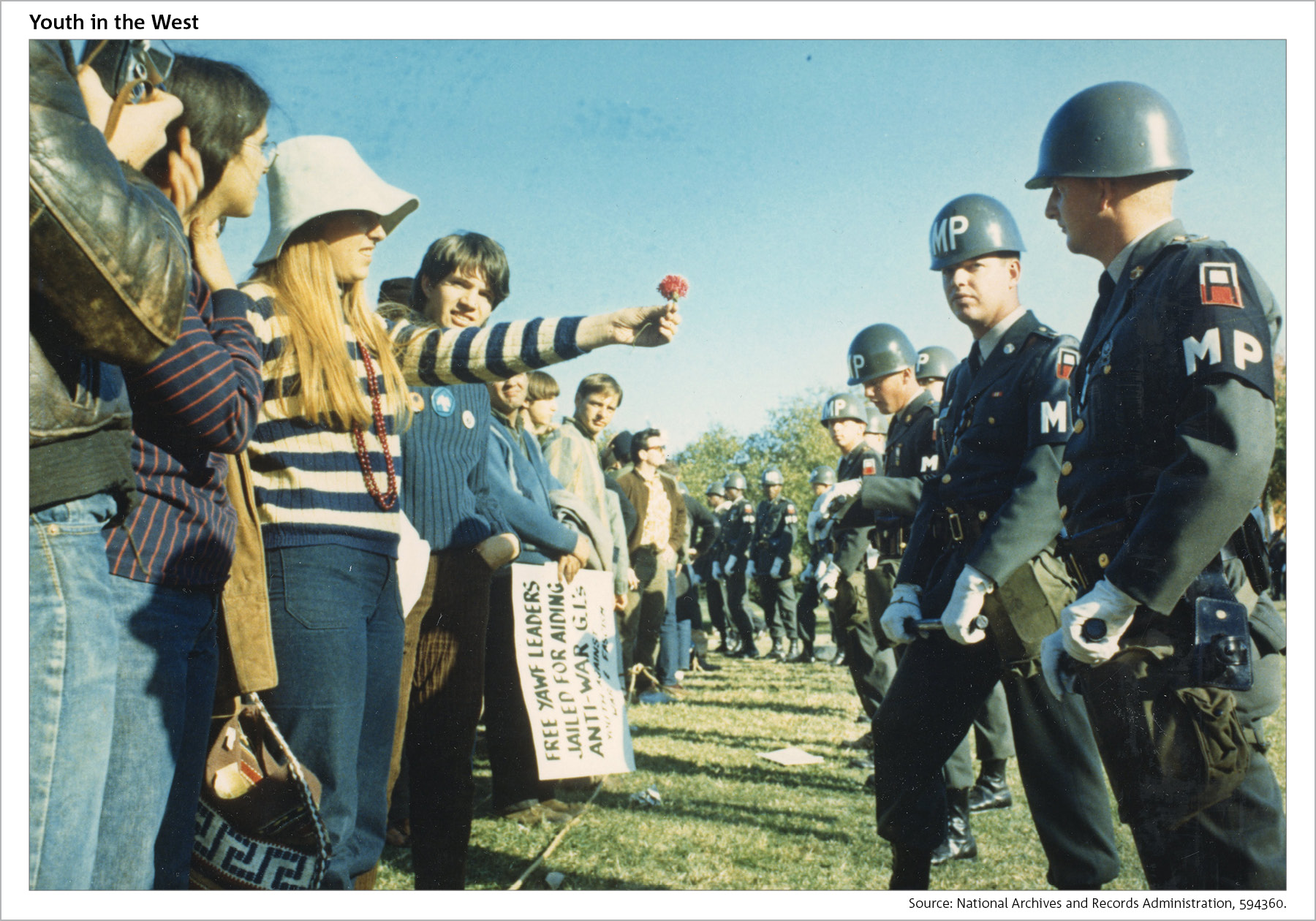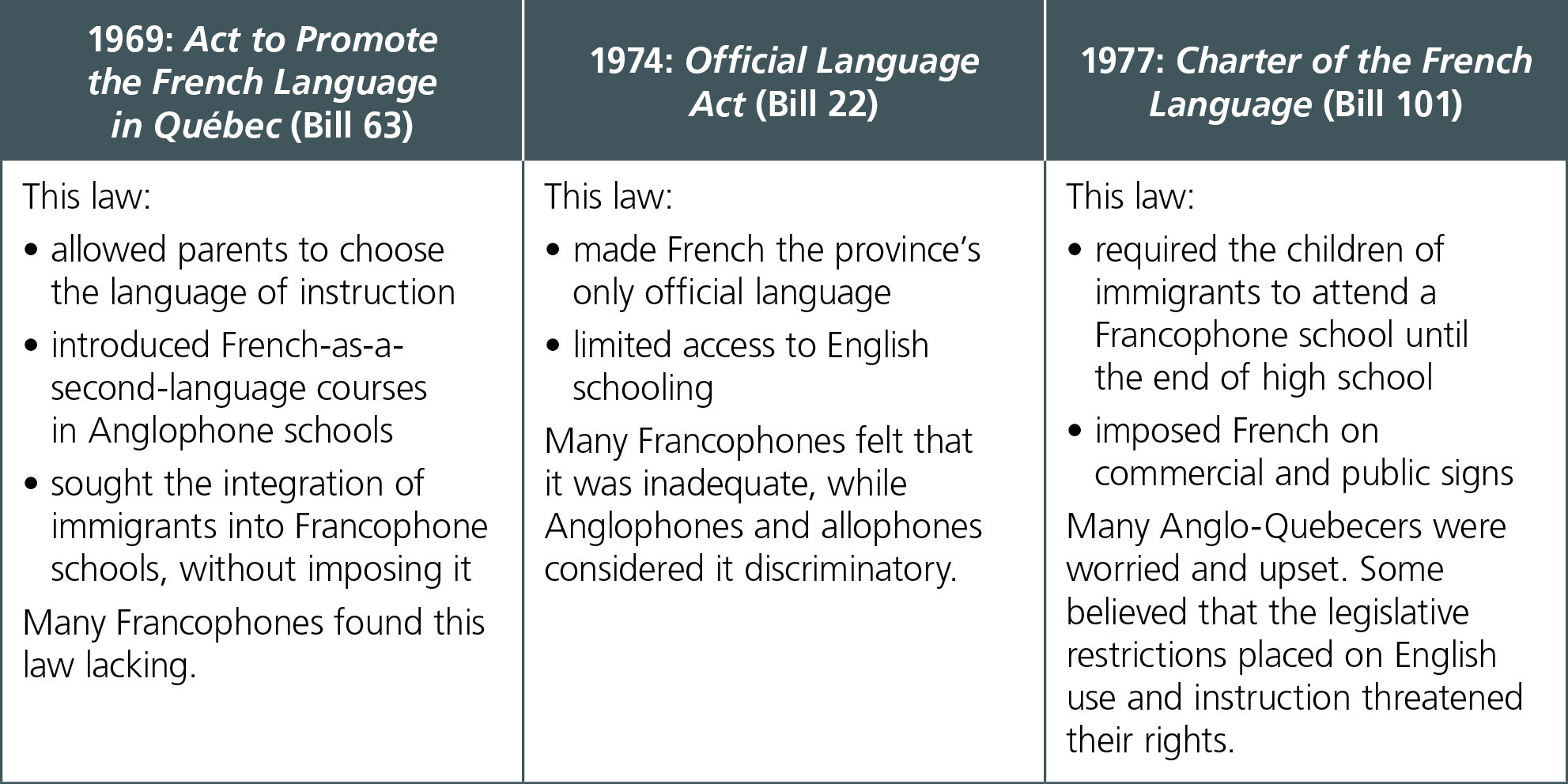Click on the different concepts to explore the content.
Power
- The Duplessis government supported provincial autonomy, anti-unionism and social conservatism.
- Before 1960, the Catholic Church exerted a lot of influence over Québec society.
- Trade unionists, artists and intellectuals opposed Duplessis’ Union nationale and challenged the influence of the Catholic Church.
- The Lesage government (1960–1966) adopted many reforms and gave the state a major role to play in modernizing Québec.
- The Johnson (1966–1970), Bourassa (1970–1976) and Lévesque (1976–1980) governments also adopted reforms that contributed to modernizing Québec.
- The Trudeau government wanted to patriate the Constitution. However, the constitutional negotiations ended in failure.
- The Lévesque government’s objective was to achieve Québec sovereignty.
Territory
- Starting in the 1960s, urban agglomerations developed. The emergence of suburbs created certain problems, including encroachment on agricultural land.
- In 1978, the Lévesque government adopted the Act Respecting the Preservation of Agricultural Land.
- Hydroelectric development transformed the territory.
Economy
- After 1945, the Western world underwent a 30-year period of economic prosperity.
- After the Second World War, the federal government increasingly intervened in the economy.
- The Duplessis government advocated economic liberalism and took measures to modernize agriculture.
- The Lesage government nationalized the vast majority of electric companies and merged them with Hydro-Québec.
- In the 1960s, Québec’s economic growth was based largely on public investment, housing construction and the modernization of manufacturing.
- In 1971, Premier Bourassa announced the development of the hydroelectric potential of Baie-James.
- The end of the 1970s was marked by an economic downturn.
Society
- After the Second World War, a consumer society emerged in Québec.
- A baby boom occurred in the post-war years. It was replaced by a falling birth rate in the early 1960s.
- In 1976, the federal government adopted a new Immigration Act, which broadened the eligibility criteria. In 1978, Québec signed an agreement with Ottawa, which allowed it to determine the number of immigrants it wished to receive and to select them.
- During the 1960s, Québec underwent a period of reforms and major changes known as the “Quiet Revolution.”
- In 1970, the Bourassa government had to deal with the October Crisis and a common front of three major labour confederations.
- The election of the Parti Québécois, in 1976, and the adoption of the Charter of the French Language, in 1977, worried Anglo-Quebecers.
- Indigenous nations continued to be subjected to a policy of assimilation. New Indian residential schools were opened in Québec following the Second World War.
- Indigenous peoples sought to address their claims and defend their rights. The Inuit and Cree signed the James Bay and Northern Québec Agreement and the Naskapi signed the Northeastern Québec Agreement.
Culture
- In the post-war years, Québec culture was increasingly influenced by American culture.
- From 1960 to 1966, the Lesage government adopted policies that promoted cultural affirmation and established cultural venues.
- In the 1960s, attitudes changed: traditional values were challenged.
- In the 1960s and 1970s, Québécois culture experienced a period of vitality. Artists took an increasingly strong position on social questions and issues and on Québec’s political future.
- Starting in 1960, Québec nationalism was transformed and was referred to as neo-nationalism.
- Various laws were passed with the goal of protecting the French language:
- in 1969, the Act to Promote the French Language in Québec (Bill 63)
- in 1974, the Official Language Act (Bill 22)
- in 1977, the Charter of the French Language (Bill 101)
- Immigration from increasingly varied countries helped to foster cultural diversity in Québec.
Welfare state
- With the Quiet Revolution, Québec became a welfare state. It took control over social services, modernized and secularized them and made them accessible to all citizens.
- To ensure proper functioning of the welfare state, the Québec government underwent reforms and developed its civil service.
Feminism
- Starting in the 1960s, women had greater access to studies and careers, which allowed them to achieve greater economic independence.
- In 1964, Marie-Claire Kirkland‑Casgrain, a minister in the Lesage government, passed the Act Respecting the Legal Capacity of Married Women.
- In 1969, abortion was decriminalized and allowed under certain circumstances and with certain restrictions.
- In the early 1970s, women were still subjected to many injustices. Many feminist groups called for reforms. Their main demands were pay equity, maternity leave, child care services and unrestricted access to abortion.
- In 1974, Québec adopted a government policy on child care. Several government agencies were formed, including the Council on the Status of Women (1973) and the Canadian Research Institute for the Advancement of Women (1976).
- At the end of the 1970s, women were still under-represented in politics.
- In 1979, the Act Respecting Labour Standards was adopted. In particular, it provided for maternity leave for female employees.
Secularization
- In the post-war years, but particularly starting in 1960, traditional values, especially those associated with Catholicism, were increasingly challenged by Quebecers. Religious practice decreased, and the number of priests and members of religious communities fell.
- Starting in 1960, the Lesage government began the secularization of public institutions.

